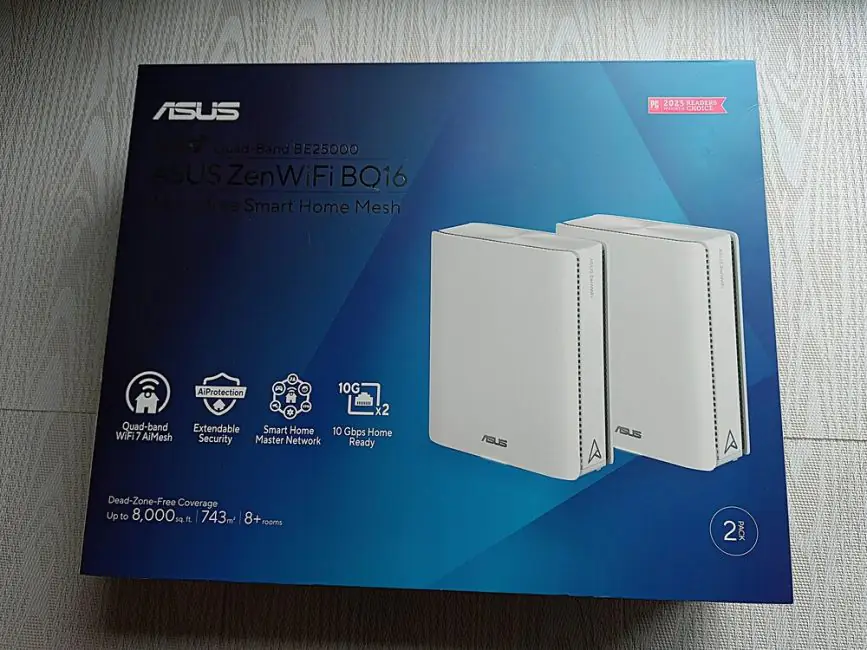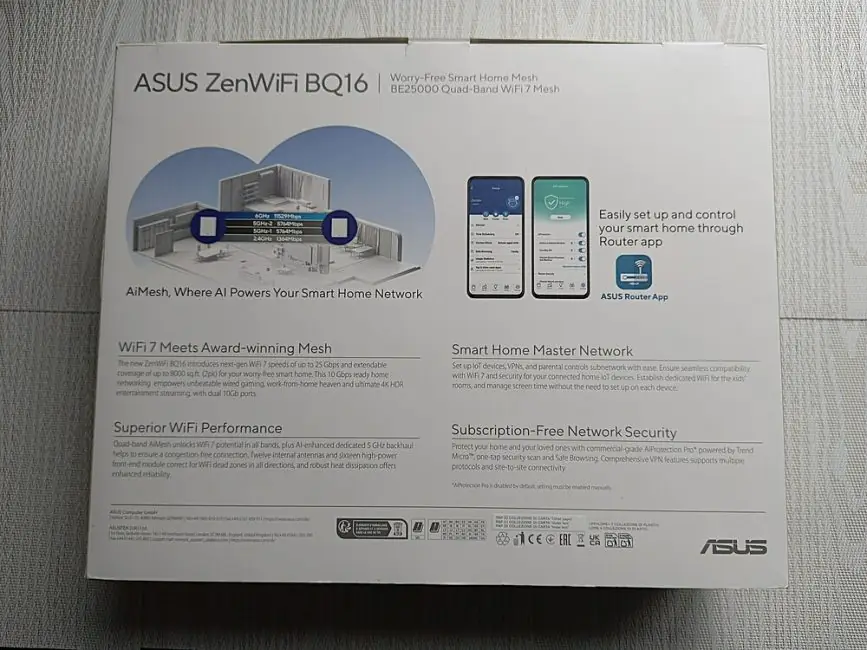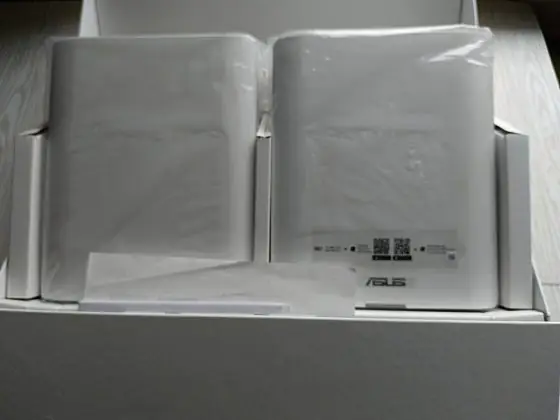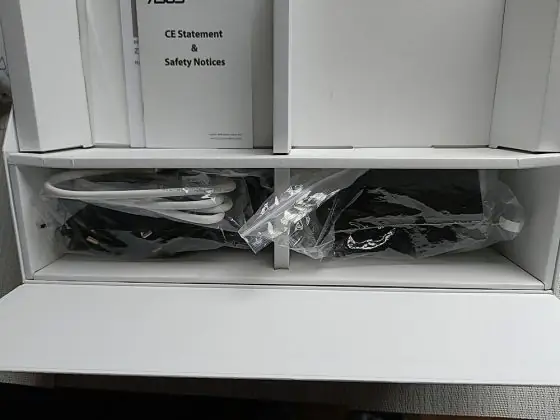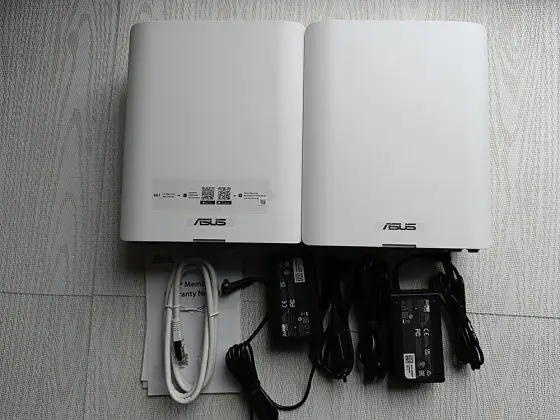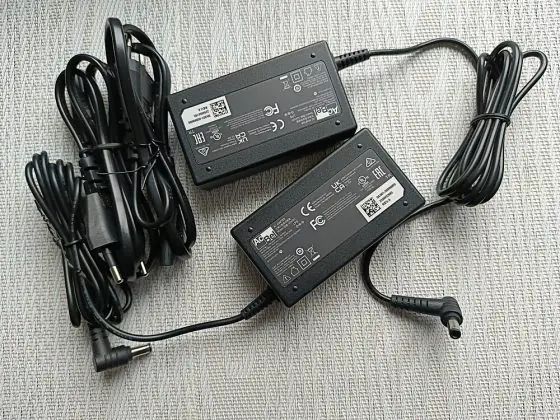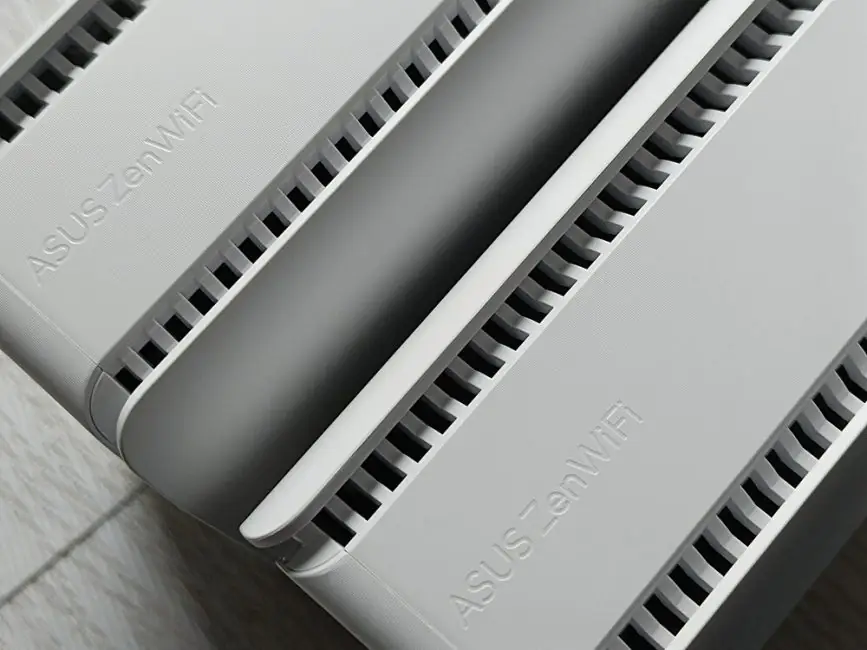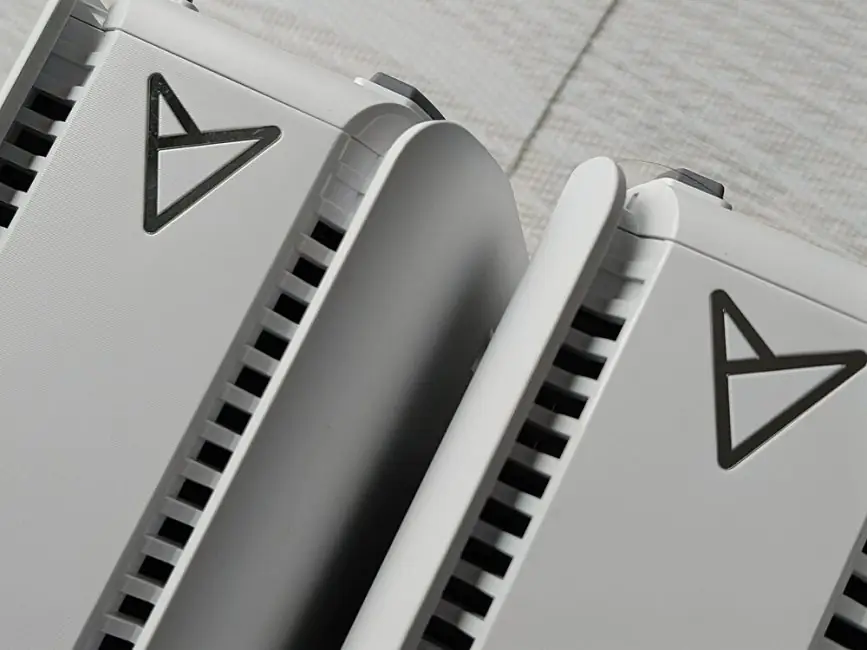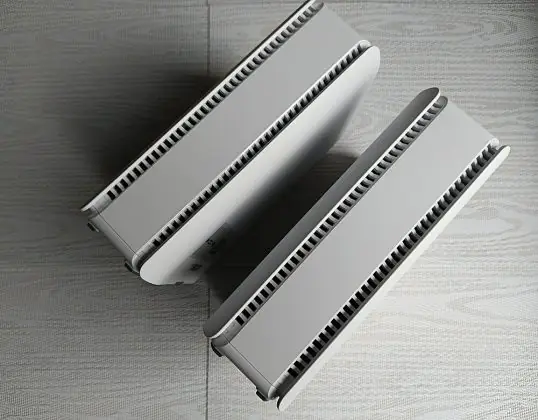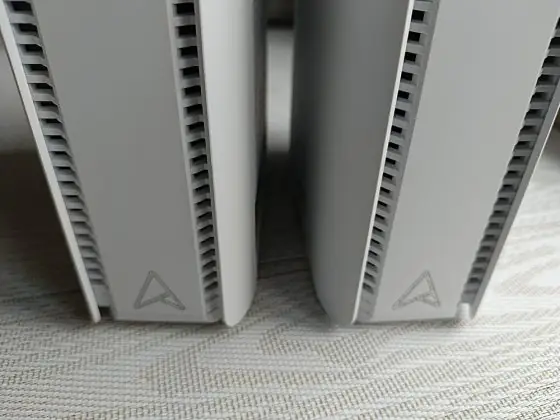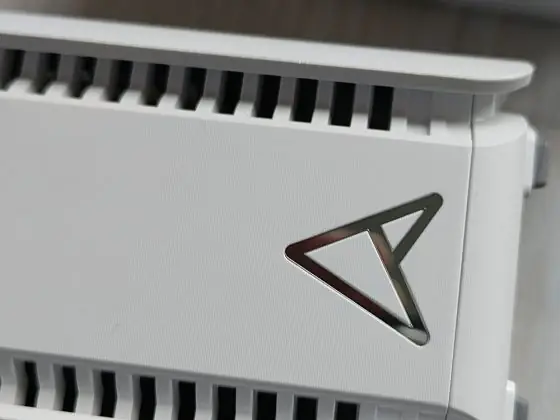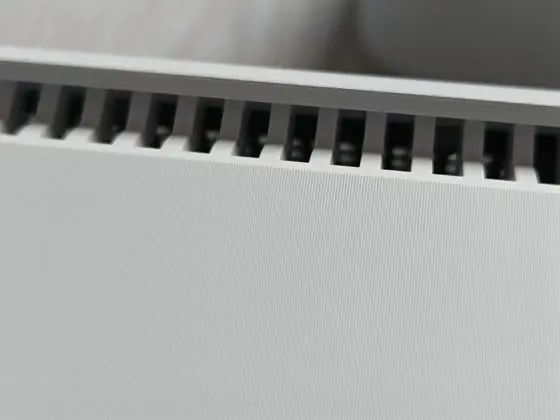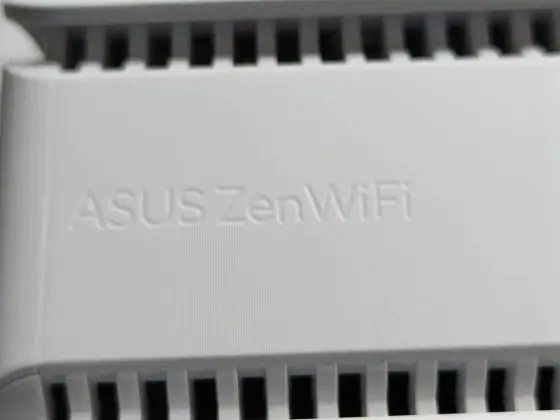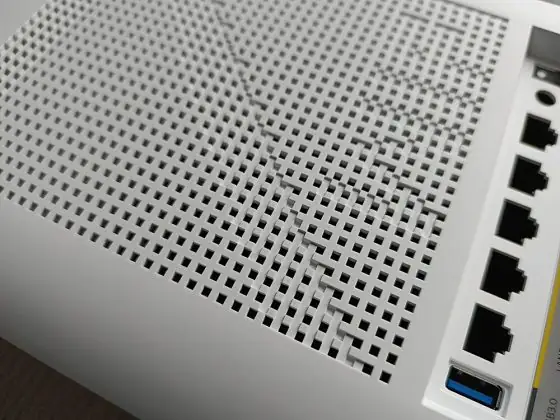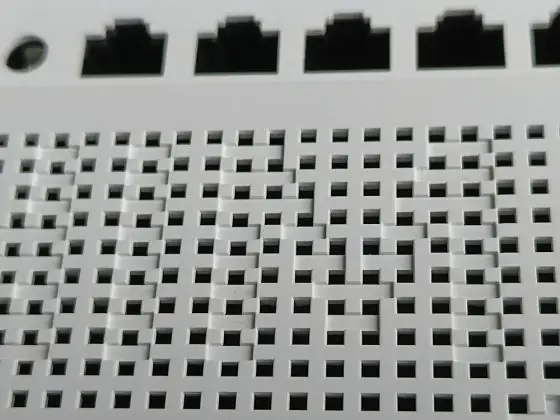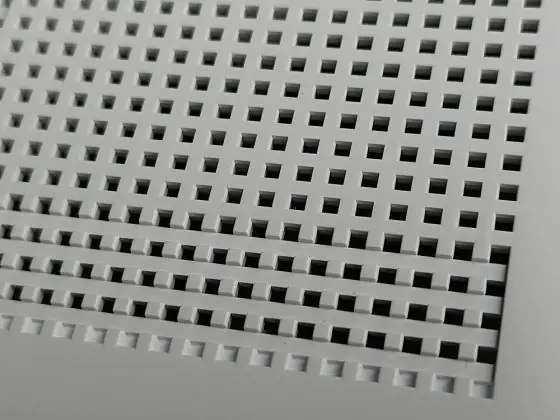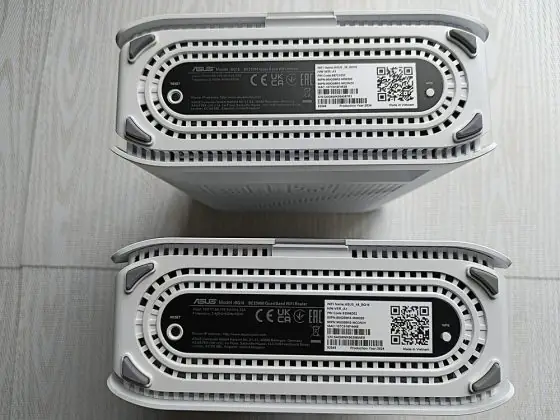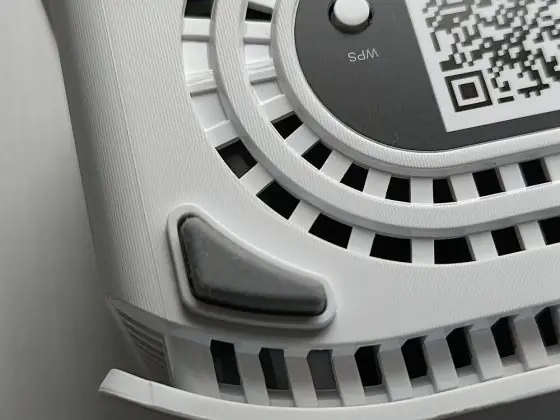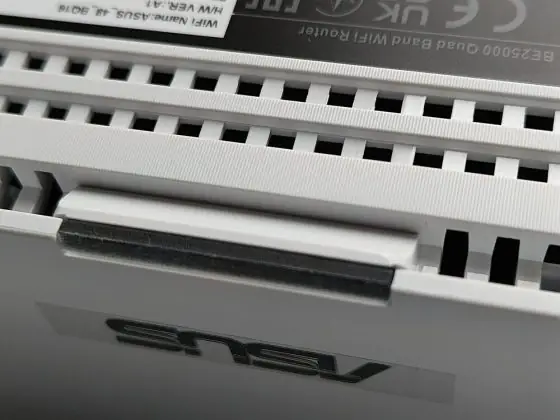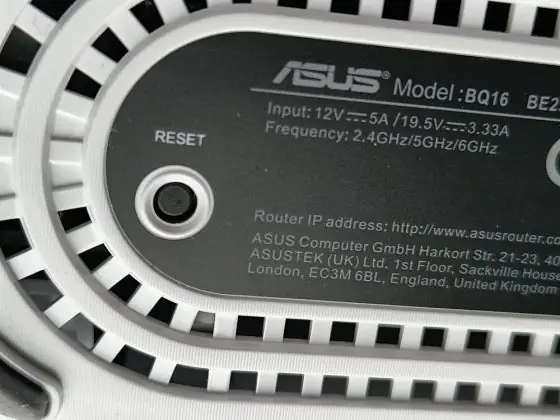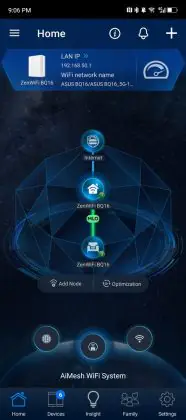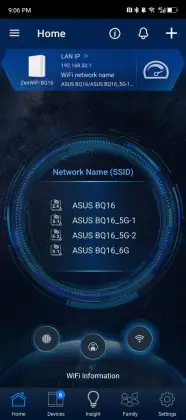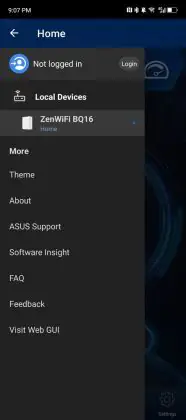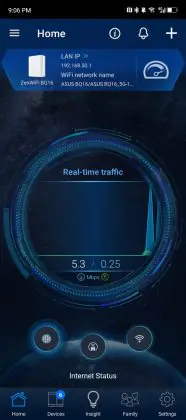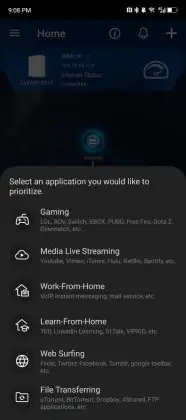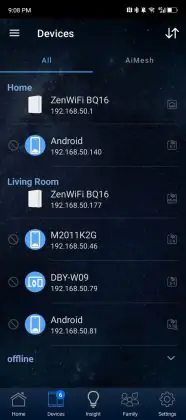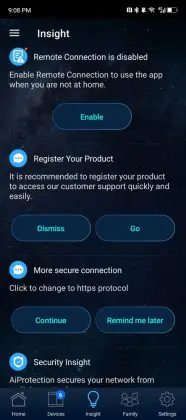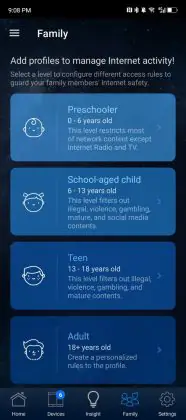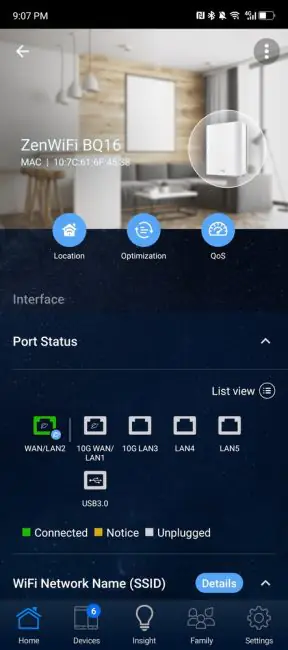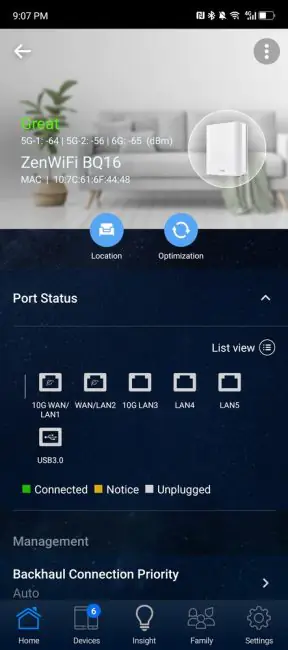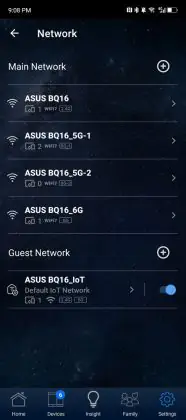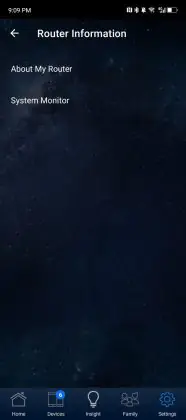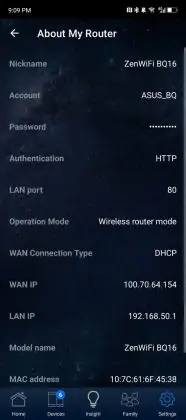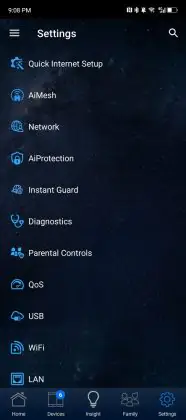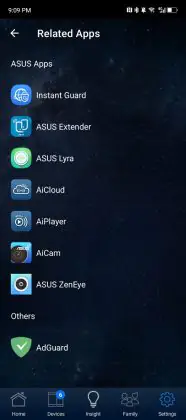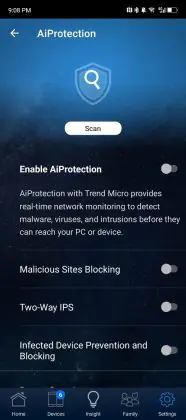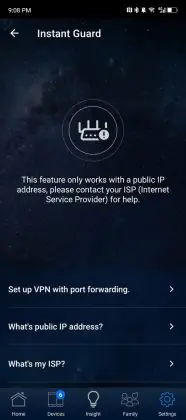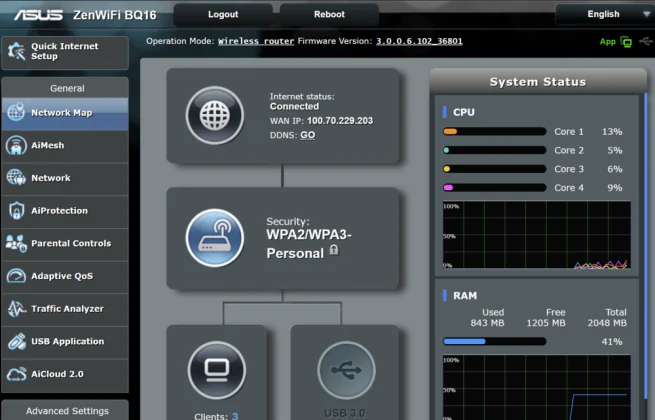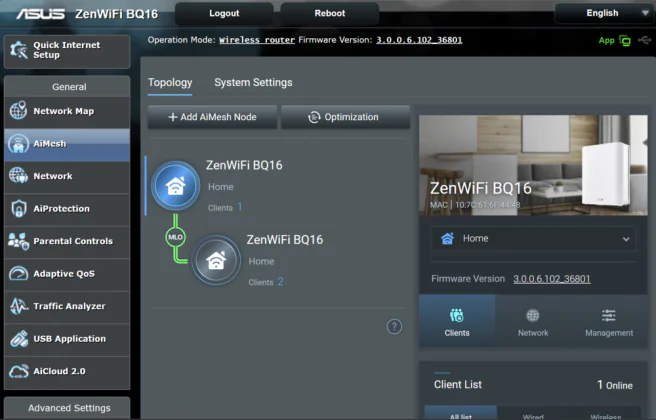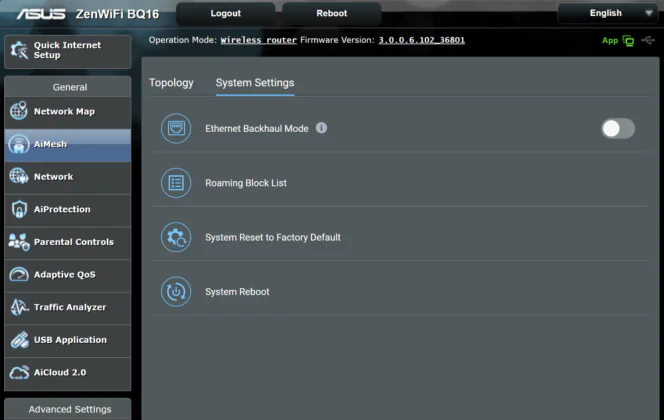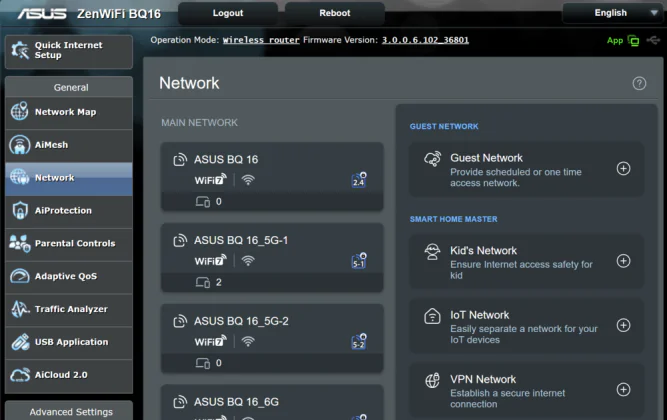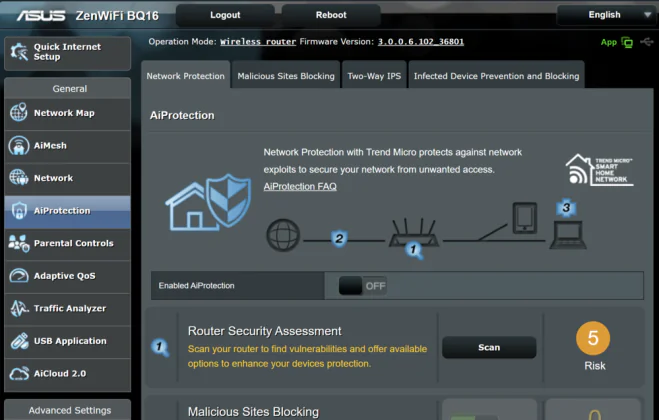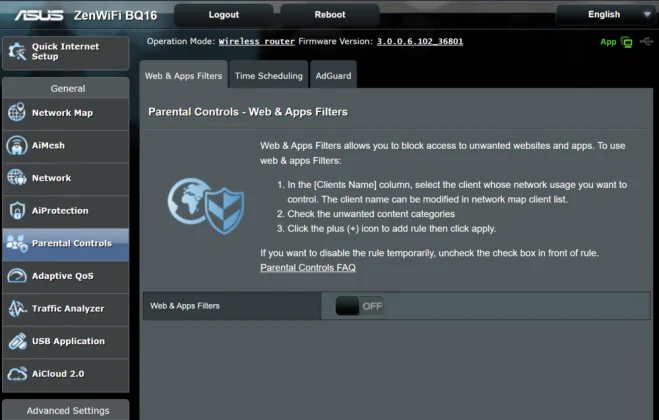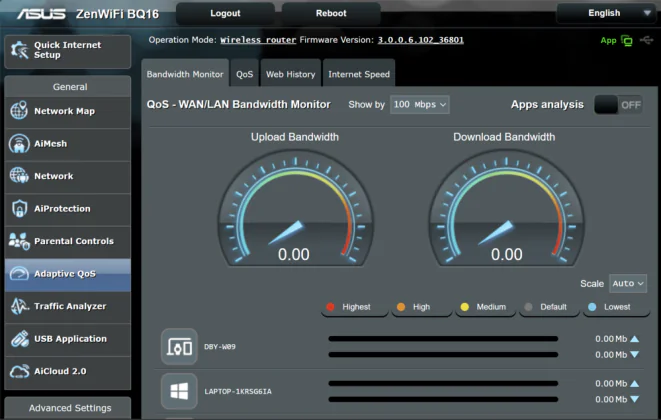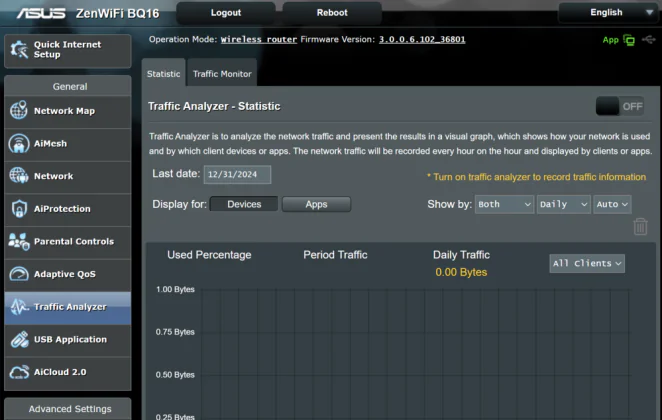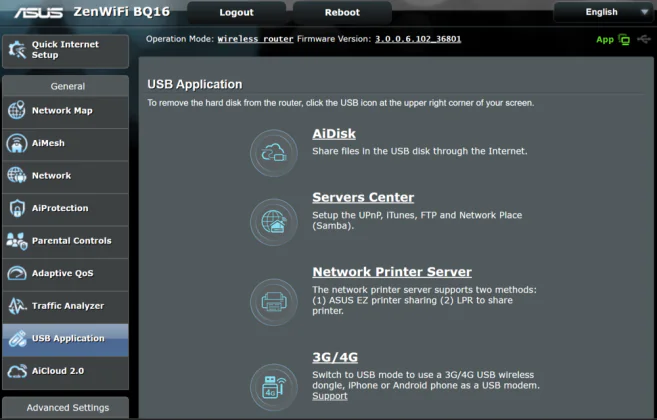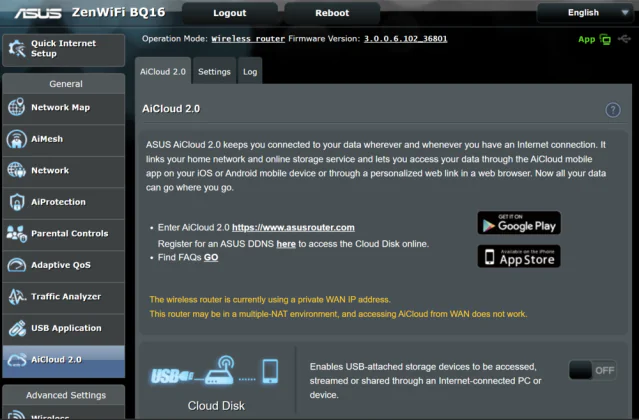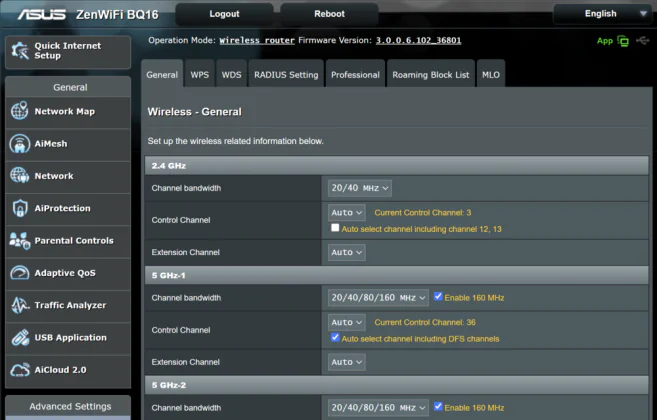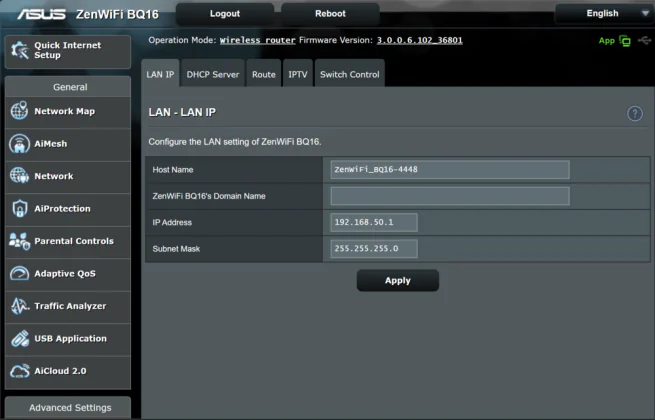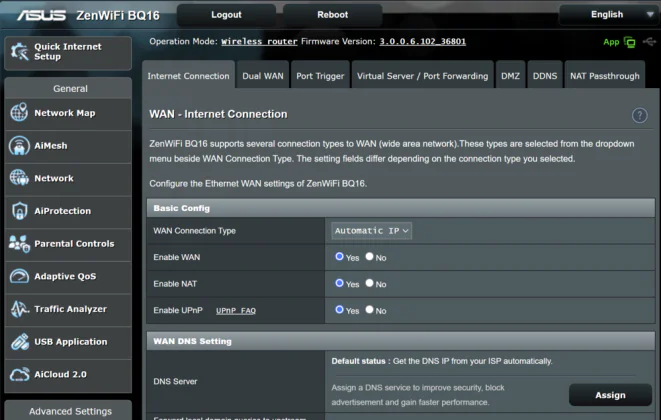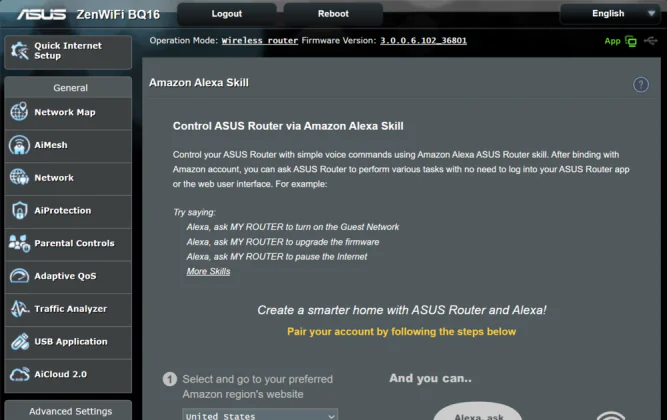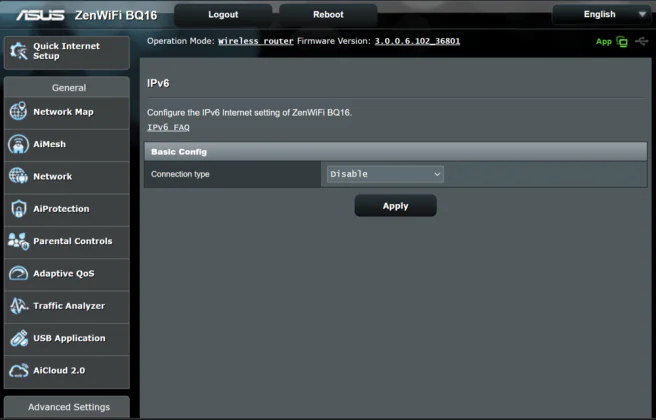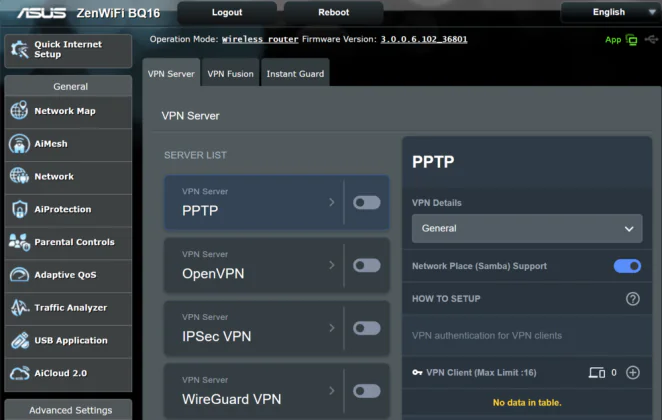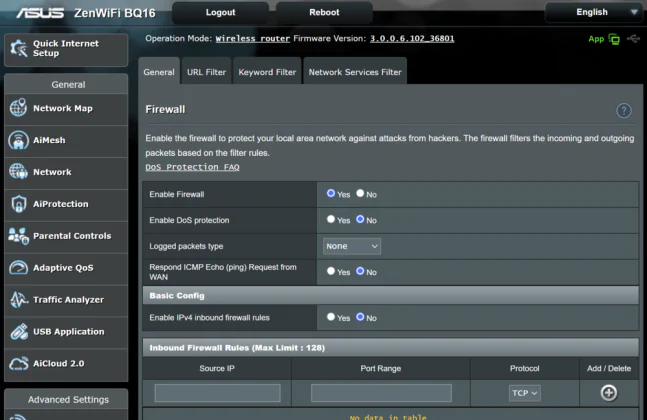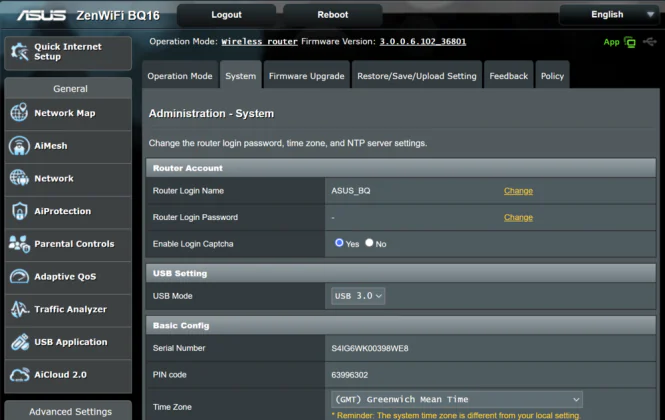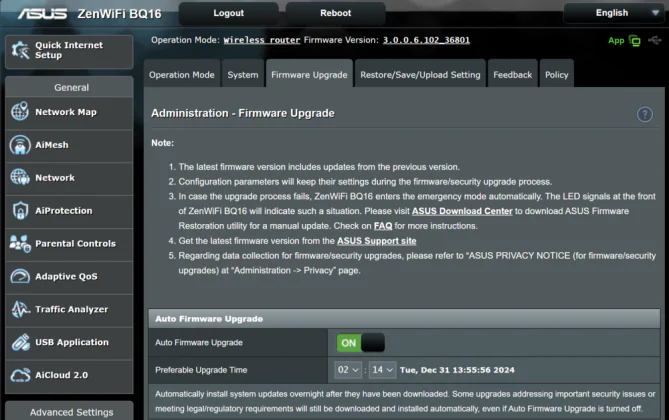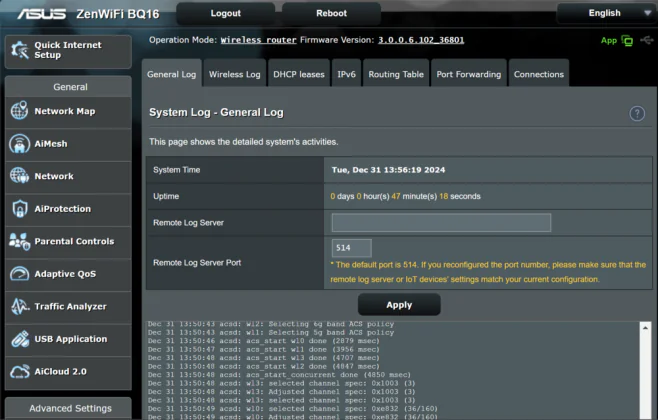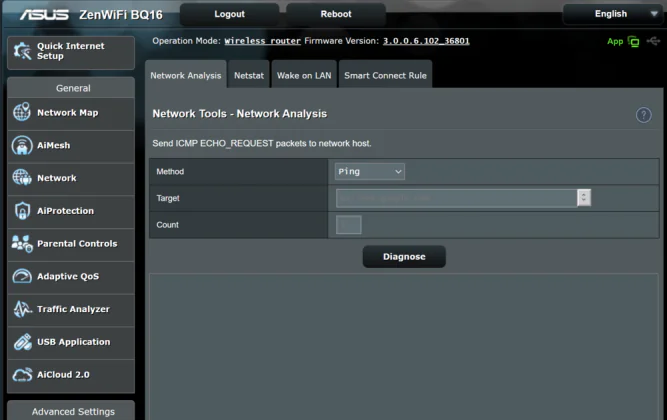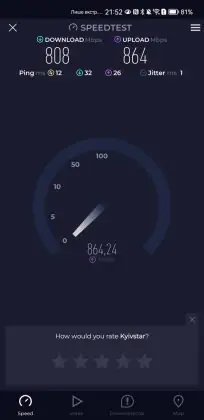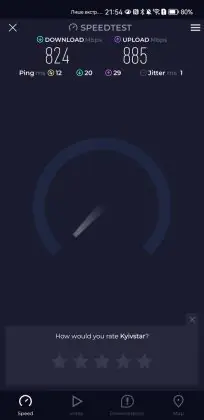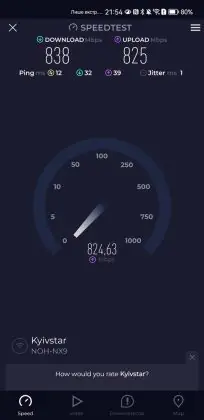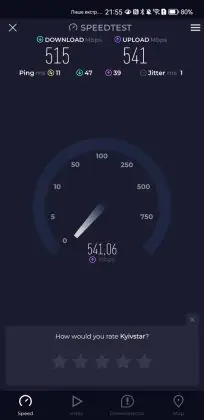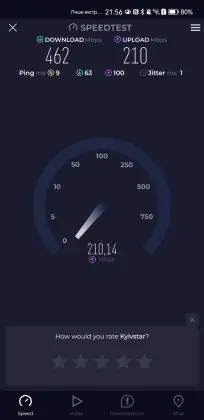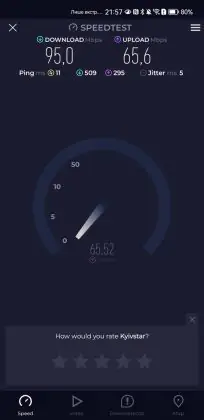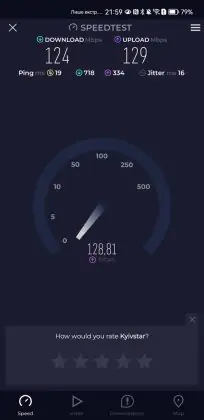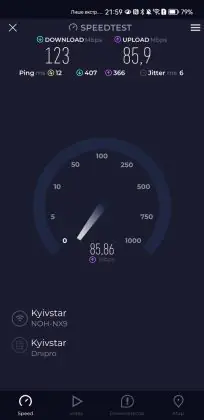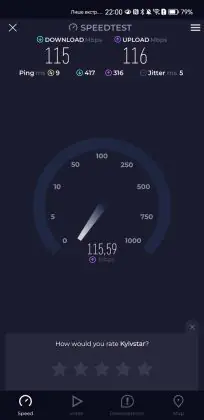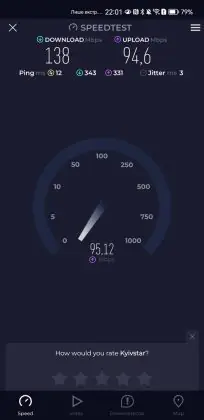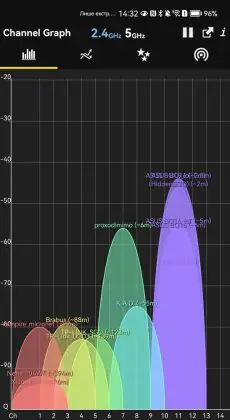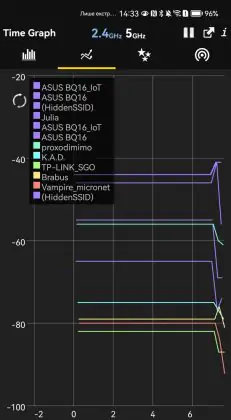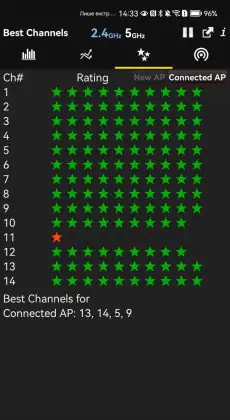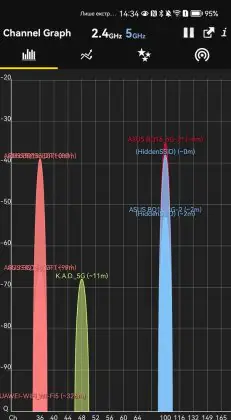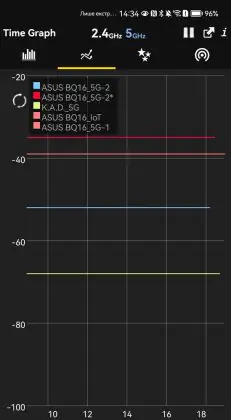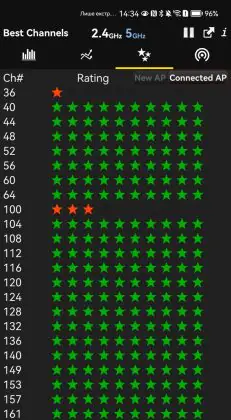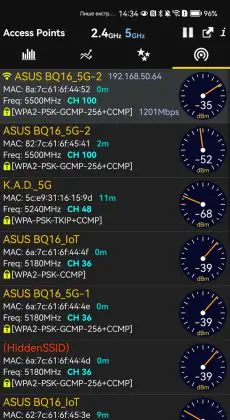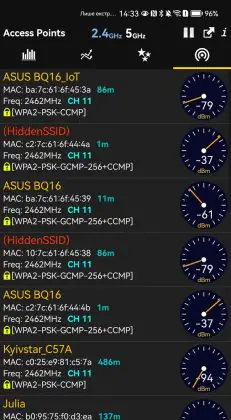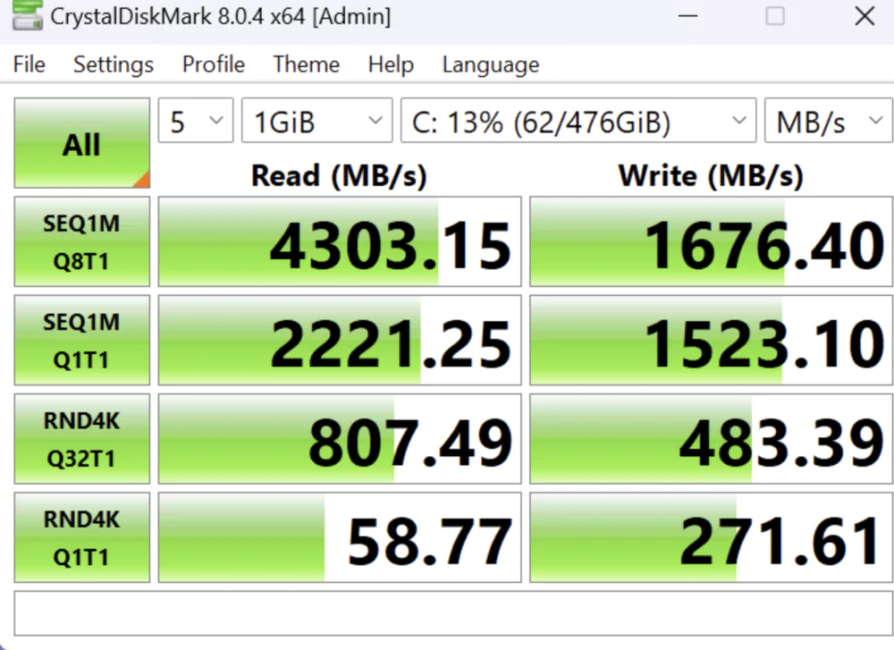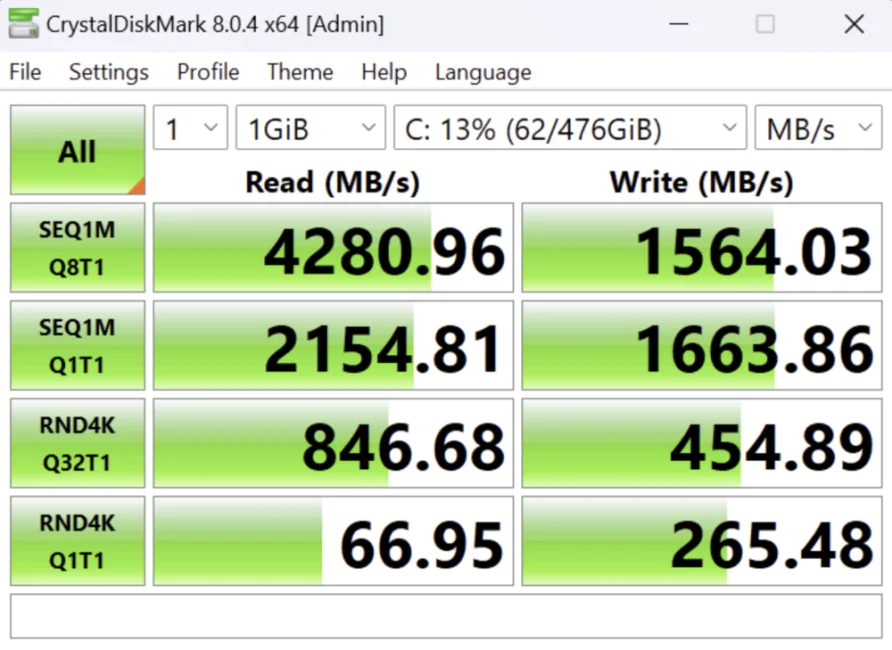© ROOT-NATION.com - Use of content is permitted with a backlink.
ASUS ZenWiFi BQ16 is an attractive option for those looking to invest in a Wi-Fi 7-enabled Mesh router. It combines a stylish design with powerful performance.
Wi-Fi 7 is poised to be the most significant upgrade to wireless internet connectivity in the last decade, and we’re excited to see how its benefits will enhance home use, business scenarios, gaming, and more.
To fully experience and take advantage of the new Wi-Fi 7 standard, you’ll need to invest in a new router that supports it. Fortunately, the range of network devices offering Wi-Fi 7 compatibility is steadily expanding.
Mesh routers deserve special attention as they are a popular way to extend Wi-Fi coverage throughout your home, especially in areas where a traditional router might struggle. By strategically placing wireless nodes, you can ensure coverage in spots like a garage workshop or an outdoor summer kitchen, allowing you to enjoy sunlight and nature while working from home. However, choosing the right Mesh router can be challenging for the average user. ASUS leads the way in this segment, offering several excellent options tailored to different usage scenarios.
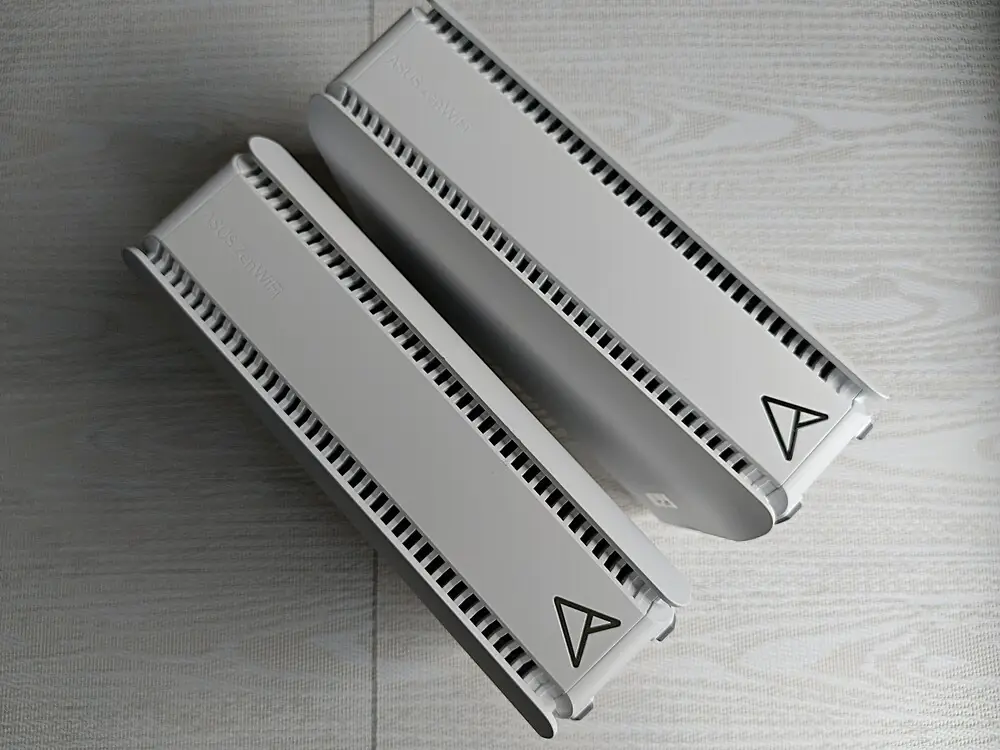
Recently, the Taiwanese company introduced an intriguing Mesh router, the ASUS ZenWiFi BQ16. Naturally, I was eager to test this new product from ASUS. Before long, this cutting-edge router with Wi-Fi 7 support arrived at my doorstep.
Today, I bring you a review of the ASUS ZenWiFi BQ16, a device that impressed me not only with its performance and functionality but also with its ultra-modern design. Let’s dive into the details.
Read also: Review of the ASUS RT-BE92U Router with Wi-Fi 7 Support
What is interesting about ASUS ZenWiFi BQ16
It’s worth noting that ASUS has introduced two versions of this Mesh router: the ZenWiFi BQ16 and the ZenWiFi BQ16 Pro. These routers are nearly identical, with the main difference being that the Pro version features two bands on the 6 GHz frequency. For my testing, I had the ASUS ZenWiFi BQ16 2-Pack White, which includes two white modules. However, there’s also an option to purchase a single router unit.
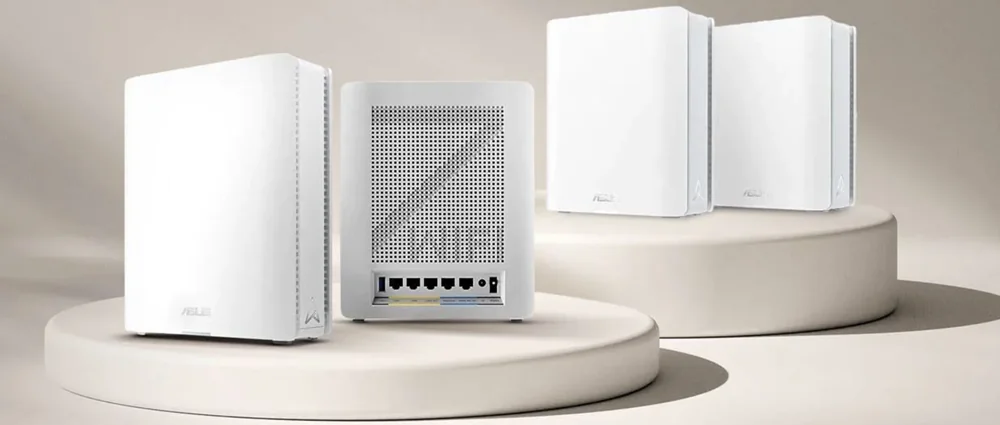
This router is equipped with advanced Wi-Fi 7 Mesh technology, offering 16-stream connectivity and exceptional speeds across four bands—up to 25 Gbps. With its optimized AiMesh network, ultra-fast 10-gigabit Ethernet ports, and a suite of new networking technologies, this quad-band Mesh Wi-Fi system is ready to build a smart home network that will remain relevant for years to come.
The ZenWiFi BQ16 boasts an incredible speed of up to 25,000 Mbps. Thanks to its dual 5 GHz bands, it provides a dedicated Mesh network, ensuring optimal performance and high reliability for all compatible devices. Wi-Fi 7 introduces a brand-new ultra-wide 320 MHz bandwidth in the 6 GHz band, doubling the data transmission capacity.
The ZenWiFi BQ16 is equipped with 12 internal antennas and 16 powerful interface modules that eliminate network dead zones, providing stable coverage in all directions. Its efficient heat dissipation solution ensures the device’s reliability.
The 4K-QAM technology boosts data transmission speeds by up to 20% compared to Wi-Fi 6/6E, leveraging higher QAM to compress signals more densely, enabling the transfer of more data within the same timeframe. The innovative Multi-Link Operation (MLO) feature harnesses Wi-Fi 7 by aggregating or seamlessly switching between the 6 GHz, 5 GHz, and 2.4 GHz bands simultaneously, delivering higher speeds with more reliable Wi-Fi connectivity.
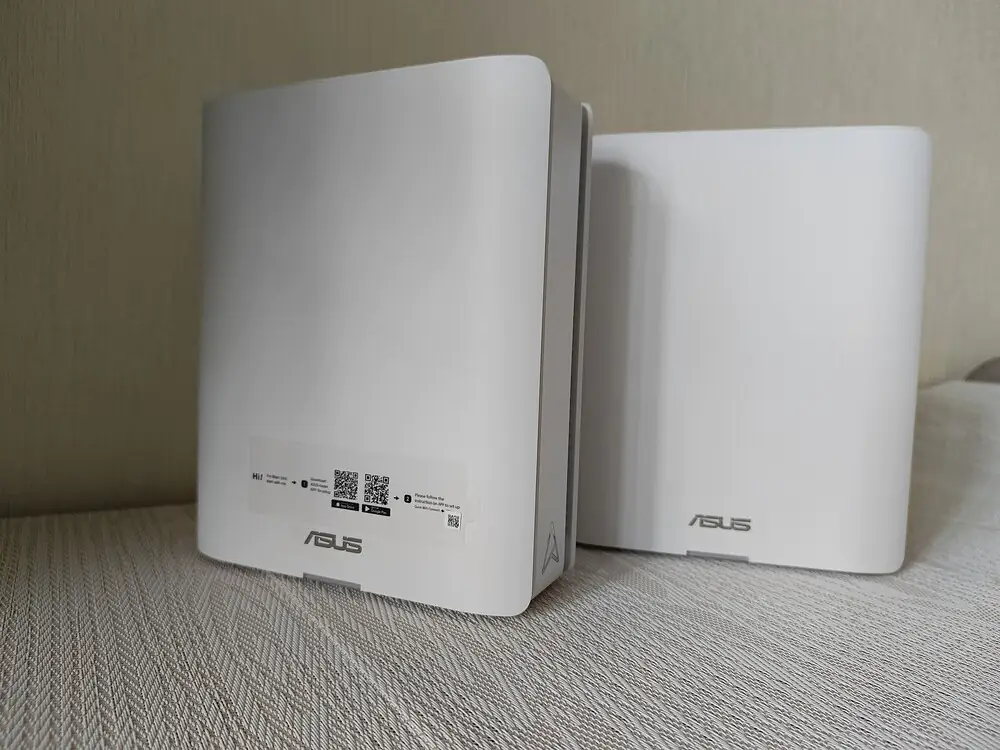
The ZenWiFi BQ16 is built on AiMesh technology and stands as the most efficient network solution for modern smart homes. Designed to effortlessly handle even the most demanding devices and network congestion, it delivers unmatched coverage of up to 740 m² when using two modules. The system ensures stable, secure, and multifunctional network connectivity, making it an ideal choice for your smart home setup.
The ASUS ZenWiFi BQ16 2-Pack White Mesh router is already available in electronics stores at a recommended price of $1120 / $1090. For the ZenWiFi BQ16 1-Pack White version, you’ll need to spend $680 / $660.
ASUS ZenWiFi BQ16 specifications
- Memory: 2 GB DDR4 RAM and 256 MB Flash memory
- Ports: 1×RJ45 10/100/1000/10000 BaseT for WAN/LAN, 1×RJ45 10/100/1000 BaseT for WAN/LAN, 1×RJ45 10/100/1000/10000 BaseT for LAN, 2×RJ45 10/100/1000 BaseT for LAN, 1×USB 3.0 Gen 1 Type A
- Buttons: Wi-Fi on/off button, reset button, WPS button
- Power: AC input 110~240 V (50~60 Hz). DC output 19 V with a maximum current of 3.42 A
- Dimensions (W×D×H): 214×174.2×72 mm
- Weight: 1341 g
- Antennas: 12 internal antennas
- Wireless communication standards: IEEE 802.11a, IEEE 802.11b, IEEE 802.11g, WiFi 4 (802.11n), WiFi 5 (802.11ac), WiFi 6 (802.11ax), WiFi 6E (802.11ax), WiFi 7 (802.11be), IPv4, IPv6
- Operating frequency: 2.4 GHz, 5 GHz and 6 GHz
- Transfer rate: maximum performance BE25000: 1376 + 5764 + 5764 + 11529 Mbps; WiFi 7 (802.11be) (2.4 GHz): up to 1376 Mbit/s; WiFi 7 (802.11be) (5 GHz-1): up to 5764 Mbit/s; WiFi 7 (802.11be) (5 GHz-2): up to 5764 Mbit/s; WiFi 7 (802.11be) (6 GHz): up to 11529 Mbps
- Wireless transmission functions: OFDMA (orthogonal frequency division multiplexing for multiple access source), beamforming function – standard and universal, high data rate 4096-QAM
- Transmission ranges: 20/40/80/160/320 MHz
- Wireless network: MU-MIMO, UTF-8 SSID, WiFi MAC address filter – max. number of MAC address filters 64, Wireless scheduler, Airtime fairness, Universal beamforming, Explicit beamforming
- Wireless transmission security: WPA3-PSK, WPA2-PSK, WPA-PSK, WPA-Enterprise, WPA2-Enterprise, WPS support, WPA3-Enterprise, Let’s Encrypt, DNS-over-TLS, SSH, Security Scan
- Guest network function: 2.4 GHz guest network, 5 GHz guest network
- Quality of service: advanced QoS function
- WAN: types of Internet connection – automatic IP, static IP, PPPoE (MPPE support), PPTP, L2TP
- Management: UPnP, IGMP v1 / v2 / v3, DNS proxy, DHCP, NTP client, DDNS, port enable, virtual server, DMZ, system event log
- DHCP: server, DHCP client list, address reservation
- Port Forwarding: virtual server, port activation, UPnP, DMZ
- VPN: VPN server – PPTP server, OpenVPN server, IPSec server; VPN client – PPTP client, L2TP client, OpenVPN client.
I received a powerful, modern Wi-Fi Mesh system from ASUS, designed to provide a reliable connection in various usage conditions.
Read also: Review of the ASUS ROG Zephyrus G16 2024 Gaming Laptop with AMD Ryzen AI 9 HX 370
What’s in the package
The ASUS ZenWiFi BQ16 comes in a large blue cardboard box with an image of the product on the front, along with a list of its key features. As expected, ASUS highlights the Wi-Fi 7 capabilities and the fact that the router can support ultra-fast 10Gbps internet connections.
Inside the box, you’ll find two white ASUS ZenWiFi BQ16 routers, two power adapters with European and standard plugs, an Ethernet cable, and various accompanying documentation.
This is a standard package for Mesh routers of this class, providing everything needed for initial setup and ongoing use.
Attractive design
The ASUS ZenWiFi BQ16 features an attractive, modern design. The network device seems to carry forward the design language of previous generations.
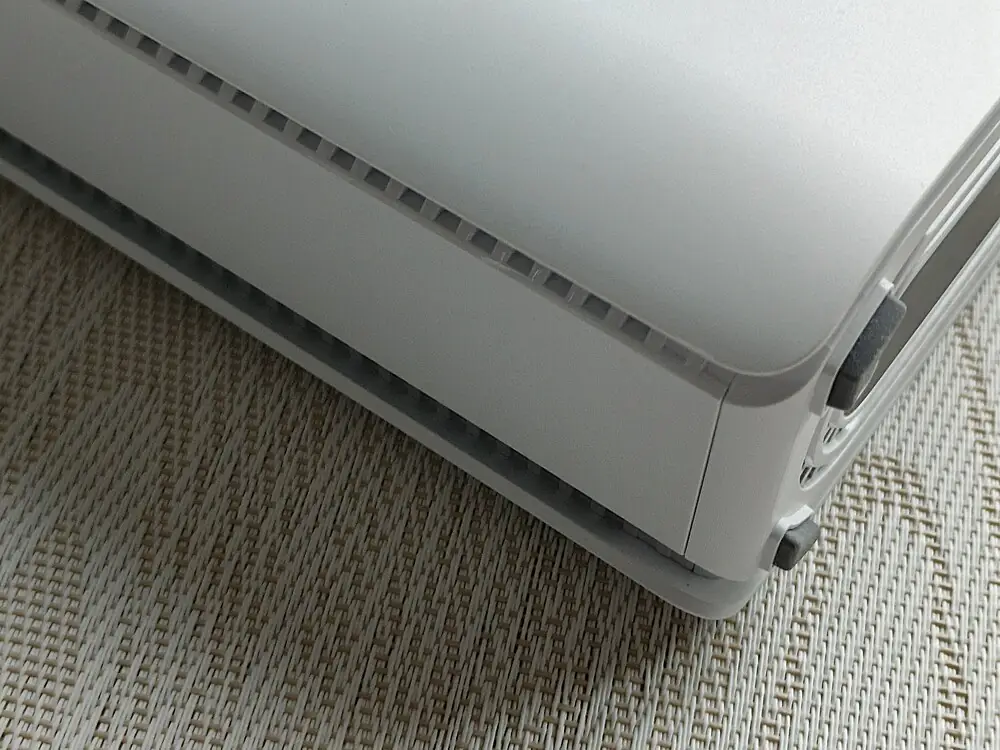
The system consists of compact white units with rounded edges and no external antennas.
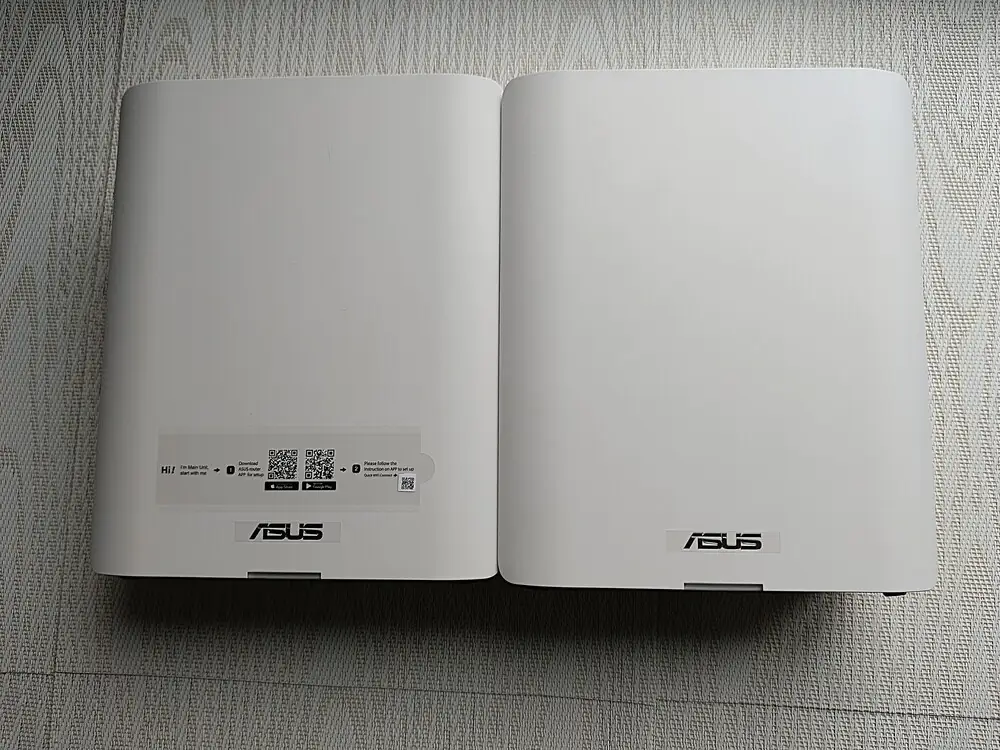
Despite the significant increase in power compared to Wi-Fi 6 and 6E modules, the dimensions remain the same: just 21 cm in height, 17 cm in width, and 7 cm in depth, which is even smaller than some standard routers.
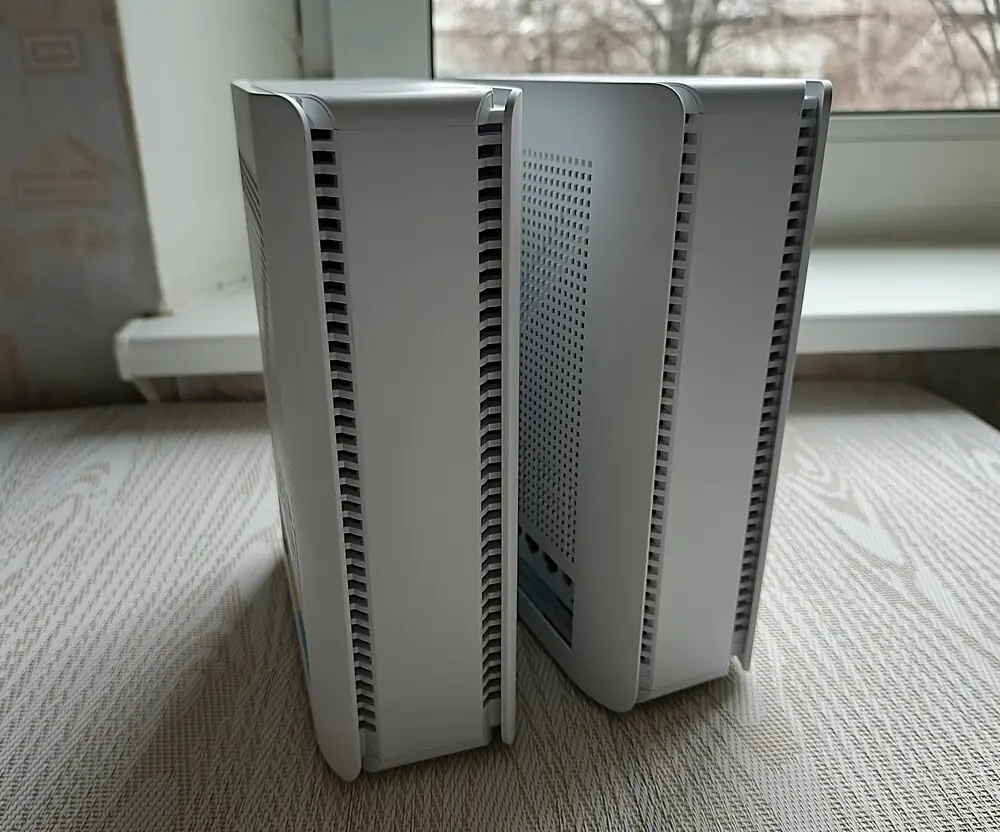
The ASUS ZenWiFi BQ16 is made from high-quality matte white plastic. The material is quite sturdy, with no flexing, creaking, or deformation.
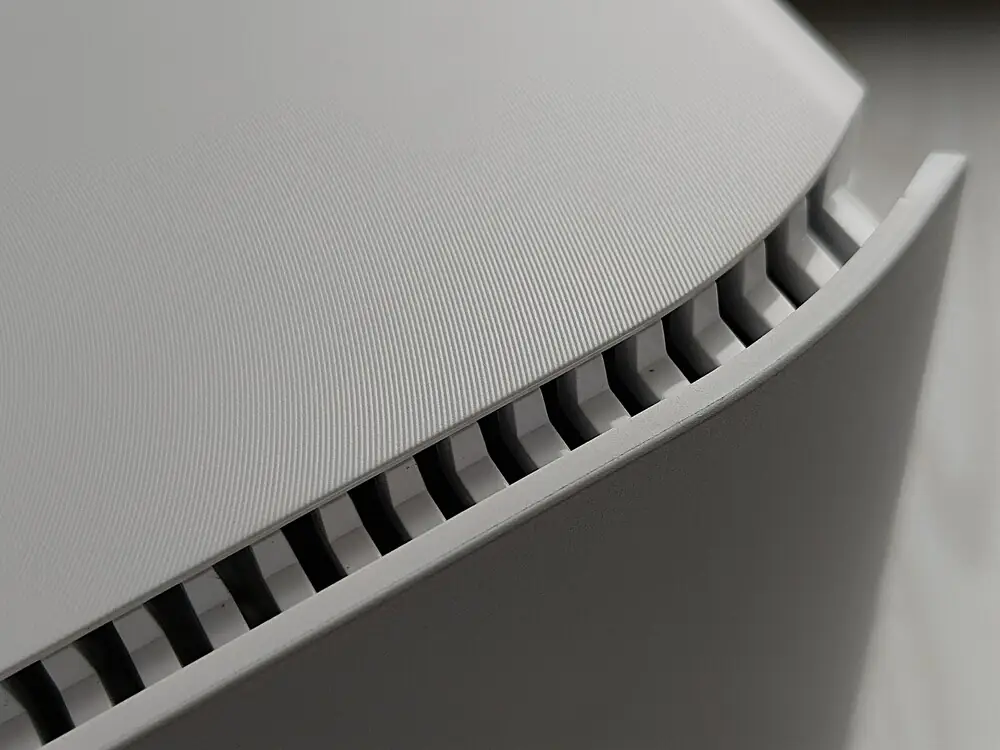
The front features a completely smooth surface with the ASUS logo at the bottom, and just below it, there’s a fairly large status LED indicator that can be turned off through the ASUS Router app.
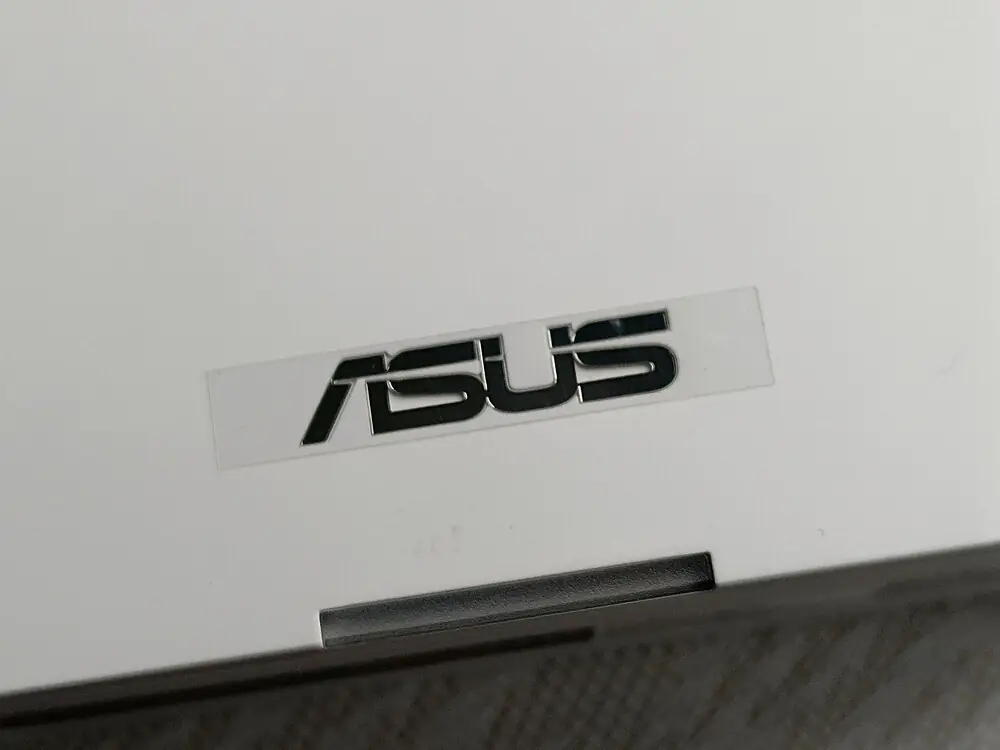
If you purchase the two-unit set, the primary unit has a sticker indicating that it should be set up first. Note that ASUS also sells the ZenWiFi BQ16 in single-unit versions.
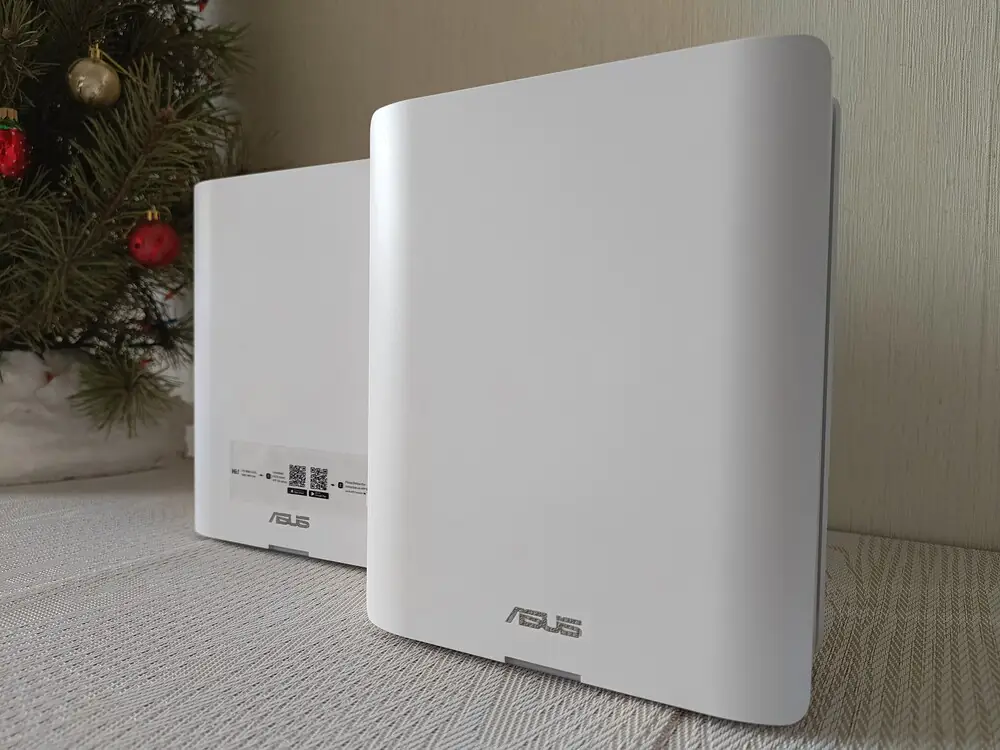
The ASUS ZenWiFi family name is printed on one side, alongside a futuristic ASUS logo that resembles the aesthetics of Star Trek.
The opposite side looks the same, but it lacks any text or logos.
Along the entire side and top of each unit, there are grilles at the edges to allow air circulation inside for passive cooling.
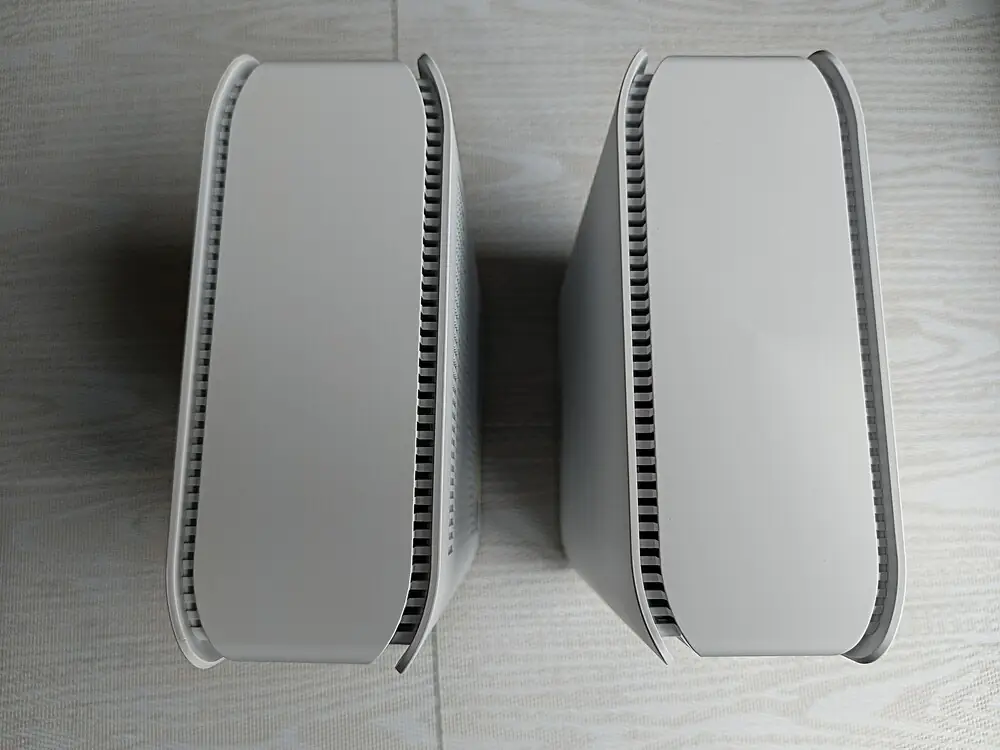
The grilles on the body give the routers a refined appearance. The top area has no relevant features or interactive elements, but everything looks very sleek and stylish.
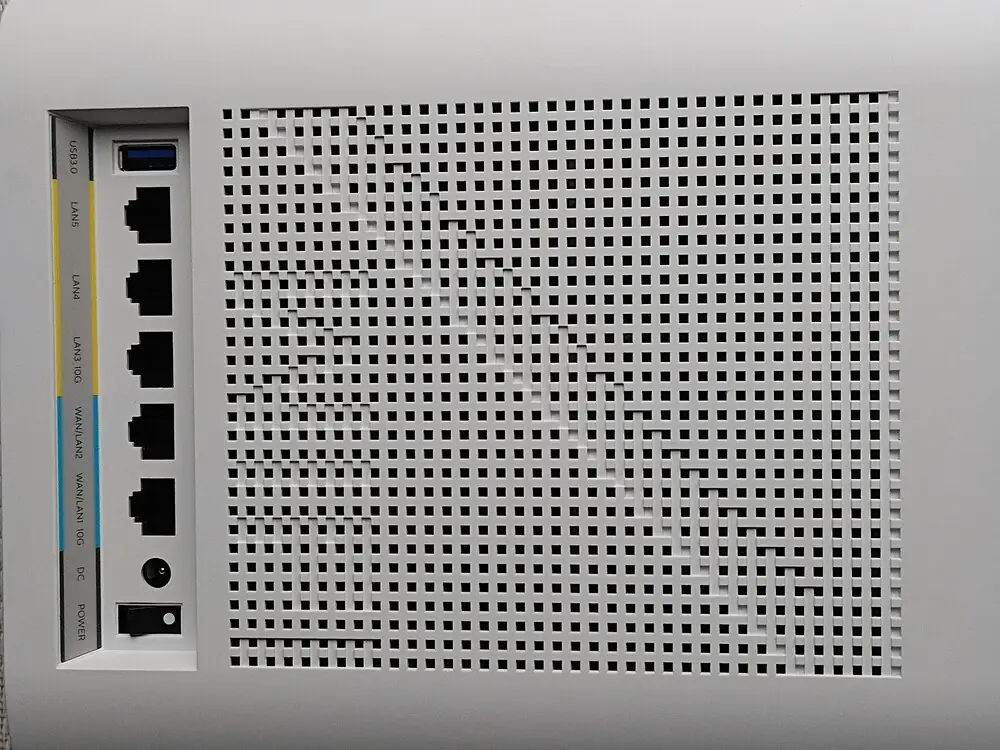
The back panel of the ZenWiFi BQ16 will also impress you with its design. While it mostly features cooling system grilles, the developers have arranged them in such a clever way that you can see the letter “Z” along with the “WiFi” name below. Below that are the ports and connectors, which we’ll discuss later.
The bottom of the router features four rubber feet to secure it on a smooth surface, along with additional ventilation grilles. You’ll also find information about the URL for accessing the web administration interface, details of the default Wi-Fi name, and the connection password. On the sides, there are WPS and Reset buttons.
I was very impressed with the design of the ZenWiFi BQ16. Every detail has been thoughtfully considered. This Mesh router will not only fit well on a desk or nightstand but also add a touch of style to your interior.
Read also: ASUS ROG Rapture GT-BE19000 Review: Tri-Band Gaming Router
Ports and connectors
Now, let’s return to the back panel of the ASUS ZenWiFi BQ16 to take a closer look at its ports, which will be identical on each unit.
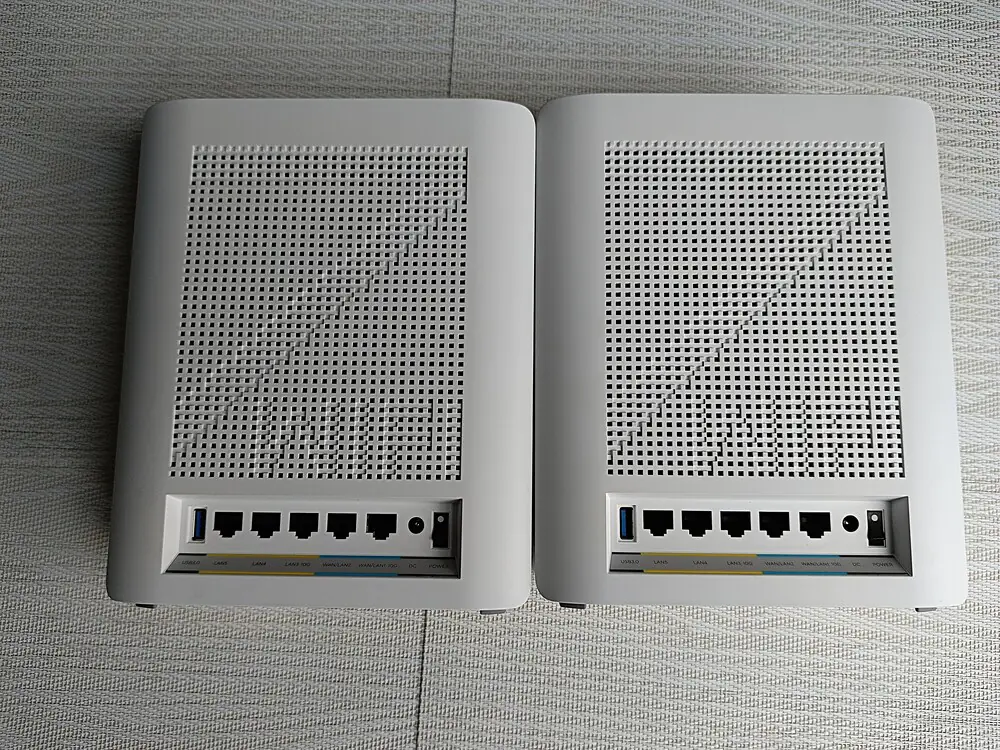
On the right, there’s a power switch and the power port. Next, you’ll find a modern 10 Gigabit Ethernet LAN/WAN port, followed by a Gigabit Ethernet LAN/WAN port. These are highlighted with blue stripes to distinguish them from the 10-Gigabit LAN port and the two Gigabit LAN ports for local network connections, which are marked with yellow stripes around the perimeter. On the left, there’s a USB 3.0 Gen1 Type-A port, allowing you to connect an external storage device.
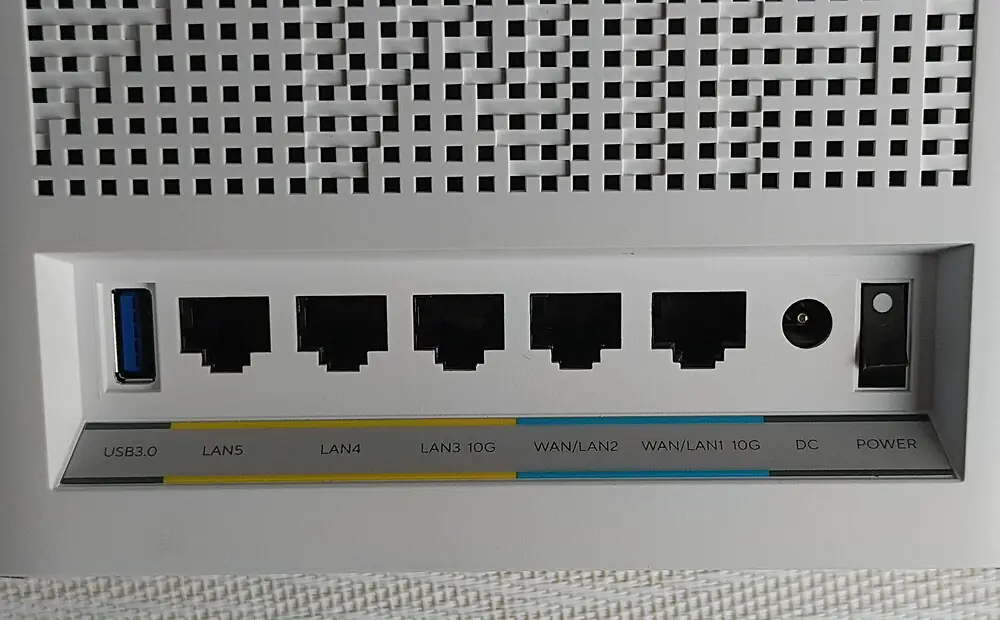
It’s worth noting that both modules in the set are identical and have the same connectivity options. With the ports, you can set up various connection configurations (Dual WAN), where the WAN, the first LAN port, and the USB port will all be active.
The inclusion of 10-Gigabit ports allows for ultra-fast connections, ensuring that this Mesh router will remain relevant for at least the next ten years.
Read also: ASUS RT-BE88U Review: Router with Up to 34 Gbps Throughput
Functional features of ASUS ZenWiFi BQ16
As I mentioned, my test set of the ASUS ZenWiFi BQ16 consists of two routers. This means that each unit can function as either the primary or secondary router under the same conditions, determined by the active WAN connection. The core hardware of each unit includes a Broadcom BCM67263 quad-core processor with a clock speed of 2.6 GHz, which handles Ethernet, hardware NAT, and the system itself. This is the world’s first system-on-chip (SoC) with 4×4 MU-MIMO Wi-Fi 7 connectivity for routers, extenders, and access points. The device also includes 2 GB of RAM and 256 MB of firmware storage.
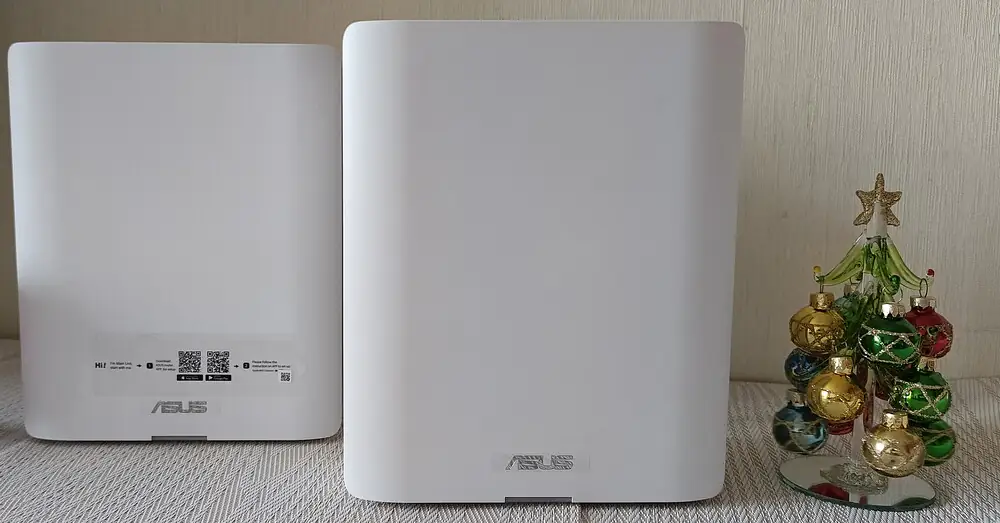
Each device comes with twelve internal antennas, which together form a four-band array covering the 2.4 GHz, dual 5 GHz, and 6 GHz bands.
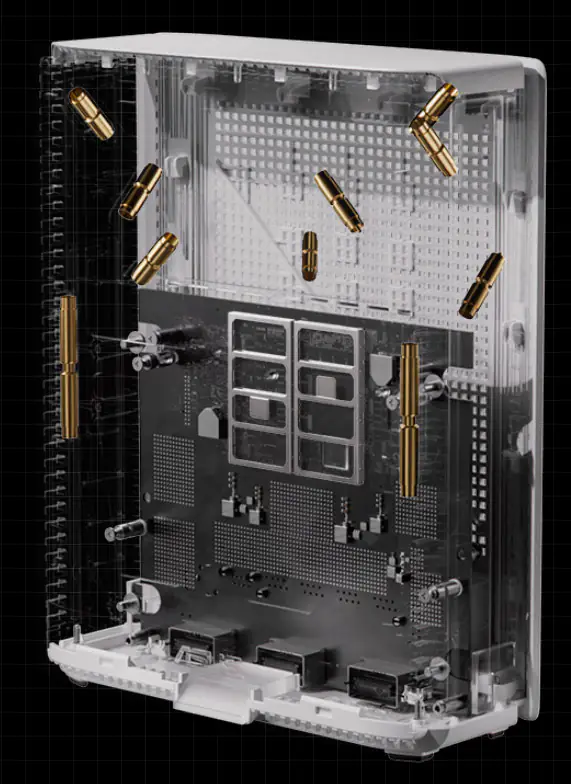
This results in a potential maximum throughput of 25,000 Mbps. Thanks to Wi-Fi 7, it also supports the new ultra-wide 320 MHz bandwidth in the 6 GHz band.
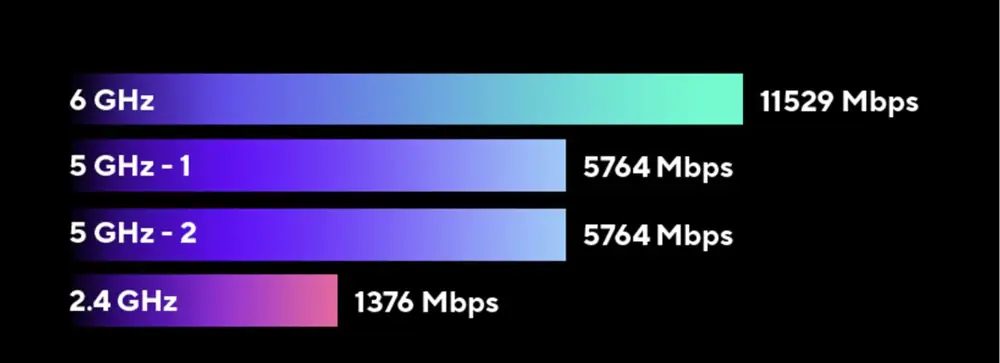
There are four bands available, either separately or in Smart Band mode, providing an incredible total throughput of 25,000 Mbps. They operate and are distributed as follows:
- 2.4 GHz band: It operates under the 802.11be standard and provides a maximum speed of 1376 Mbps in a 4×4 connection, meaning four antennas between the client and the router in a 40 MHz range. Additionally, it supports 4096-QAM modulation.
- 5 GHz-1 and 5 GHz-2 bands: These support a throughput of 5764 Mbps in 4×4 connections, operating at a frequency of 160 MHz and supporting 4096-QAM modulation. These bands can operate separately on lower (less than 100) or higher (above 100) DFS channels, depending on their manual or automatic configuration. Both bands can be used for client connections, or one can be used for trunking in a Mesh network with additional ASUS routers.
- 6 GHz band: Its main feature is the expanded frequency spectrum up to 7.125 GHz, improving speed and reducing congestion on other frequencies, as well as adding auxiliary channels. It operates at a maximum speed of 11,529 Mbps in a 4×4 configuration over a 320 MHz range on either high or low channels.
Additionally, it’s worth mentioning the support for 4K-QAM, which offers a denser data packing. This leads to a 20% increase in data transfer speed compared to Wi-Fi 6E. Finally, there’s support for the new Multi-Link Operation (MLO) technology, which allows simultaneous use and switching between all three bands (2.4, 5, and 6 GHz), forming the foundation for more stable and seamless operation, providing faster wireless connectivity.
This technology is particularly beneficial for connections between clients and nodes. The biggest advantage is that it can be used between nodes to ensure a more stable backhaul connection. Even if we primarily have a dedicated 5 GHz link between each node, MLO helps maintain a more reliable and efficient overall network performance.
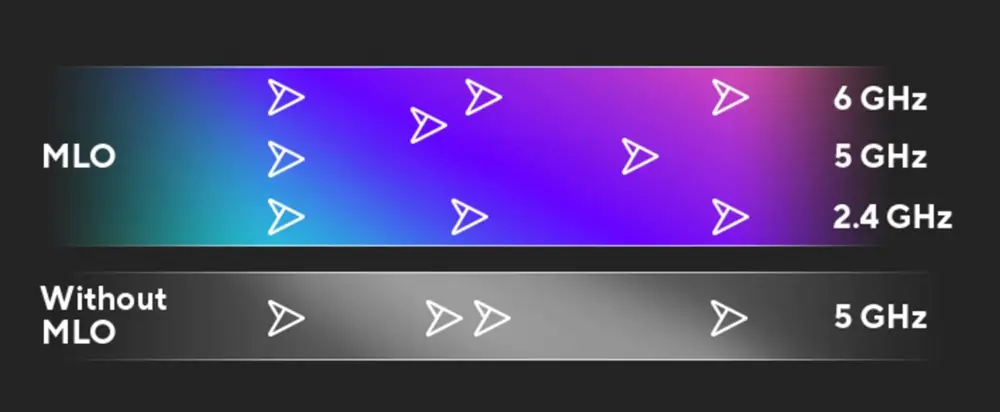
ASUS ZenWiFi BQ16 leverages MLO technology very effectively for seamless switching between the three bands, ensuring a more stable connection with maximum throughput. In practice, this technology has proven itself excellent. My devices seemed to operate at full speed, no matter where I was in the apartment.
Additionally, the support for OFDMA technology improves simultaneous client connections, while BSS Color assigns different frequencies (colors) to help clients instantly identify their network without scanning the entire spectrum. ASUS has also included Game Boost, OpenNAT, and WTFast technologies, enhancing the experience for gaming and online activities.
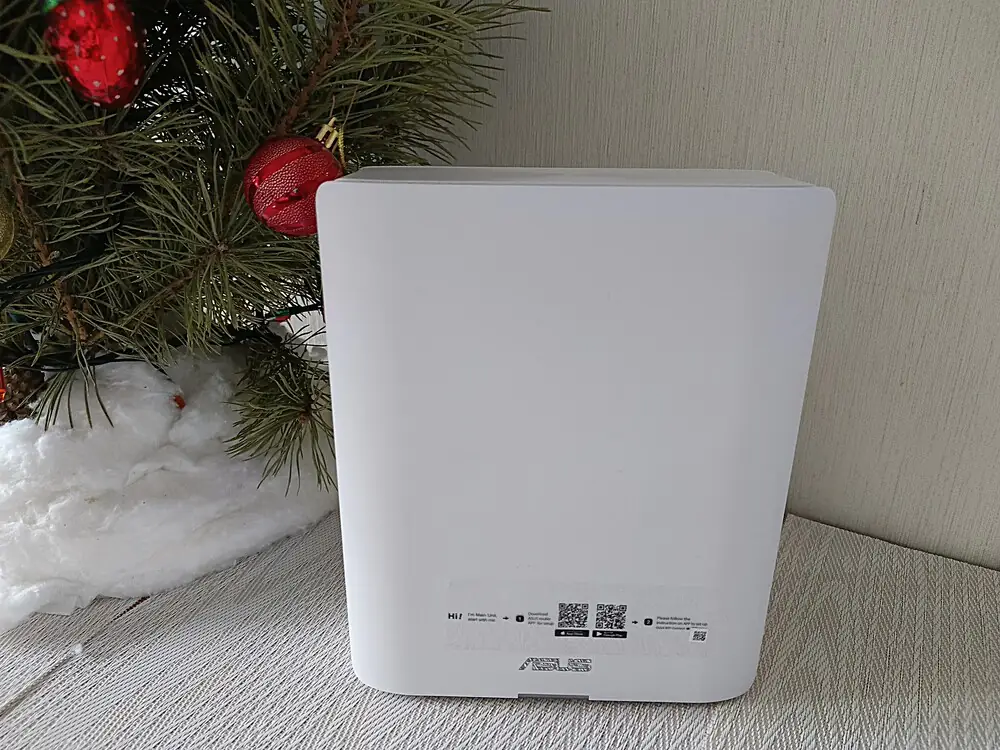
Thanks to Target Wake Time (TWT), Wi-Fi clients can be paused to optimize energy consumption and free up spectrum frequencies. Add to this the new Multi-RU Puncturing feature, and we can see how the advancements in Wi-Fi 7 will allow networking devices to deliver faster and more efficient wireless connections.
Easy first setup
The ASUS ZenWiFi BQ16 can be configured through a web browser on a computer or via the ASUS Router mobile app on a smartphone. Usually, I choose the web version for setup, but this time, I opted for the mobile app configuration.
It’s important to note that ASUS developers clearly marked the module where the provider’s cable needs to be connected. So, before starting the router setup, you must plug it into a power socket and connect your provider’s cable to either the gigabit or 10-gigabit WAN port, depending on your preference.
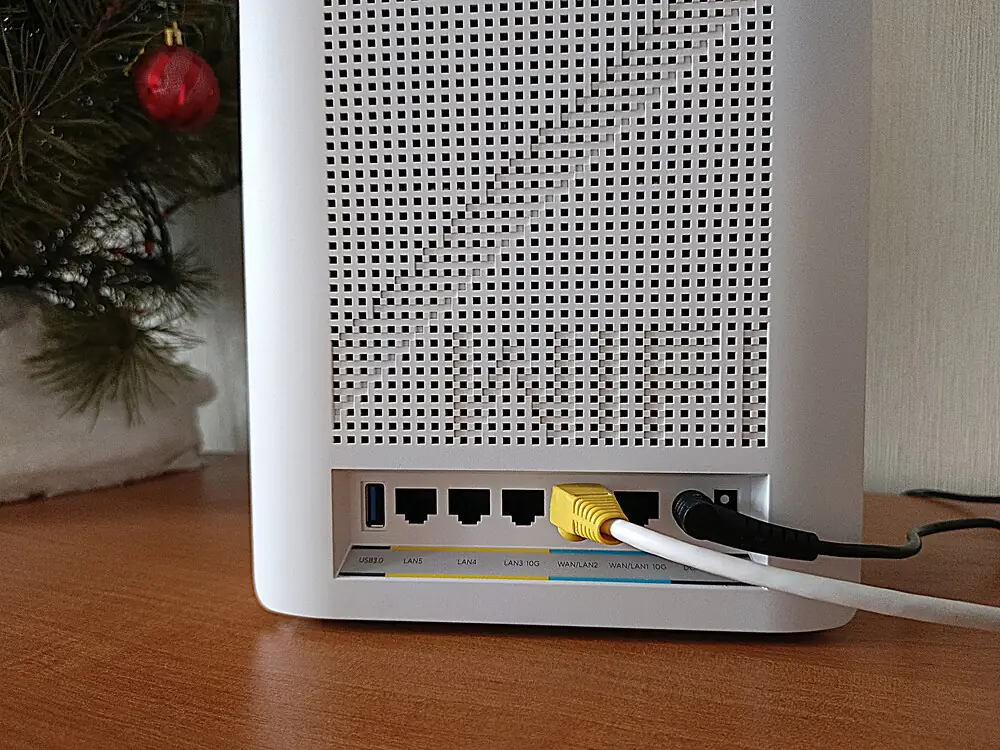
Next, you need to connect your smartphone to the Wi-Fi network. Don’t be alarmed when your mobile device says there’s no internet access yet.
To be honest, I somehow forgot about the sticker on the router’s body and connected the provider’s cable to the wrong module. The setup still proceeded as planned, but don’t be like me.
Once the router is powered up, you’ll need to select the device you want to set up, grant the necessary permissions to the app, and connect to the main ASUS ZenWiFi BQ16 unit that you’ll be using for the internet connection.
The setup process involves entering the necessary information for connecting to the internet, setting up the Wi-Fi name and password, configuring the administrator account for the ASUS ZenWiFi BQ16, and adding the second node (which usually gets detected and added automatically). At the end of the setup process, you will see a summary of your settings, and a firmware update check will be performed. If you want to take advantage of the latest fixes and improvements, you should proceed and install the most recent available firmware.
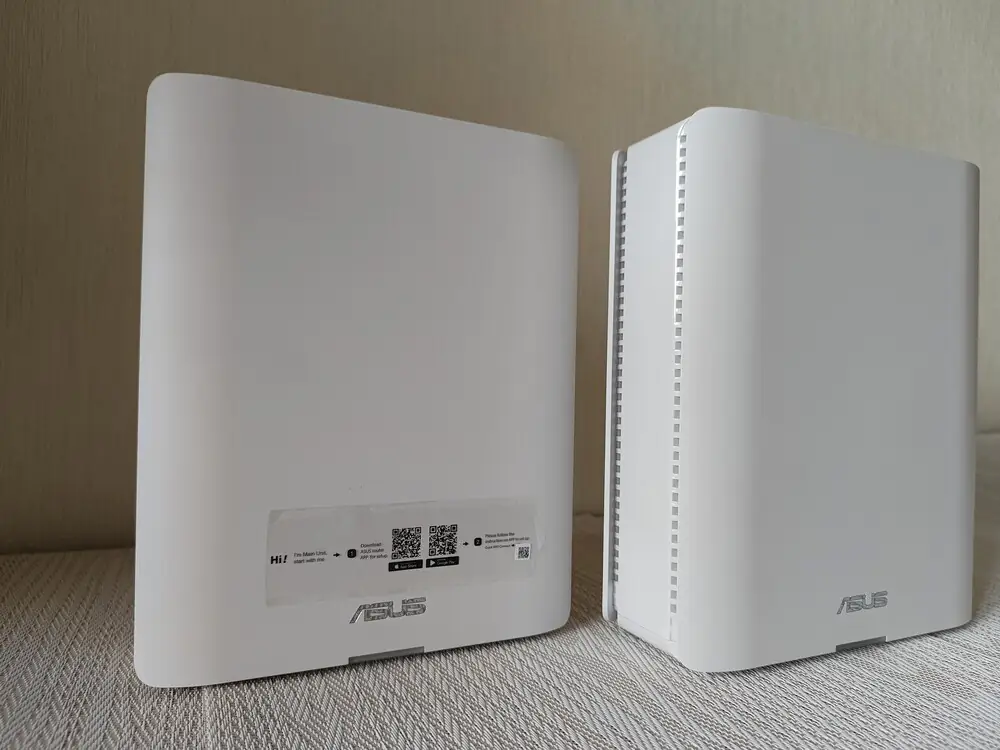
The setup process is very simple and user-friendly, even an inexperienced user can manage it. The key is patience, and within a few minutes, your ZenWiFi BQ16 units will be ready for operation.
It’s worth noting that the ZenWiFi BQ16 can operate either as a classic Mesh, where one unit transmits the signal to the other, or in Ethernet Backhaul mode, where both units emit the signal with equal power. In this mode, you can also choose the connection method: either wirelessly link the units or connect them through a wired network.
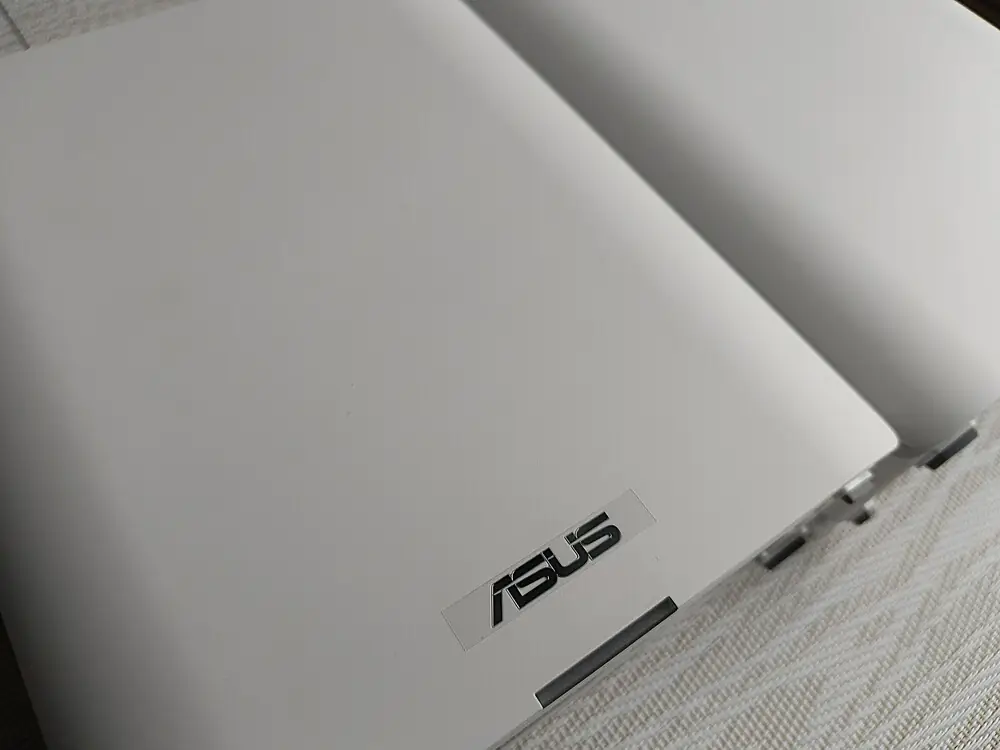
For example, if you have RJ-45 ports distributed throughout your home or office, you can connect the units to these ports in separate rooms, and both will broadcast the Wi-Fi network with the same name. It’s worth mentioning that you don’t need to configure them as two separate routers. Naturally, as expected from a decent Mesh system, you’re not limited to just two units. If needed and within your budget, there’s nothing stopping you from adding more nodes to the ASUS ZenWiFi BQ16.
Controlling ASUS ZenWiFi BQ16 via the app
If, like me, you find it more convenient to set up through the administrator’s web interface, managing the system is much easier through the ASUS Router app. Why? I believe the ZenWiFi BQ16 system is more oriented toward users who are well-versed with smartphones and prefer managing everything via the app. Yes, you can set up the Mesh system through the app, but sometimes less experienced users might encounter issues with it.
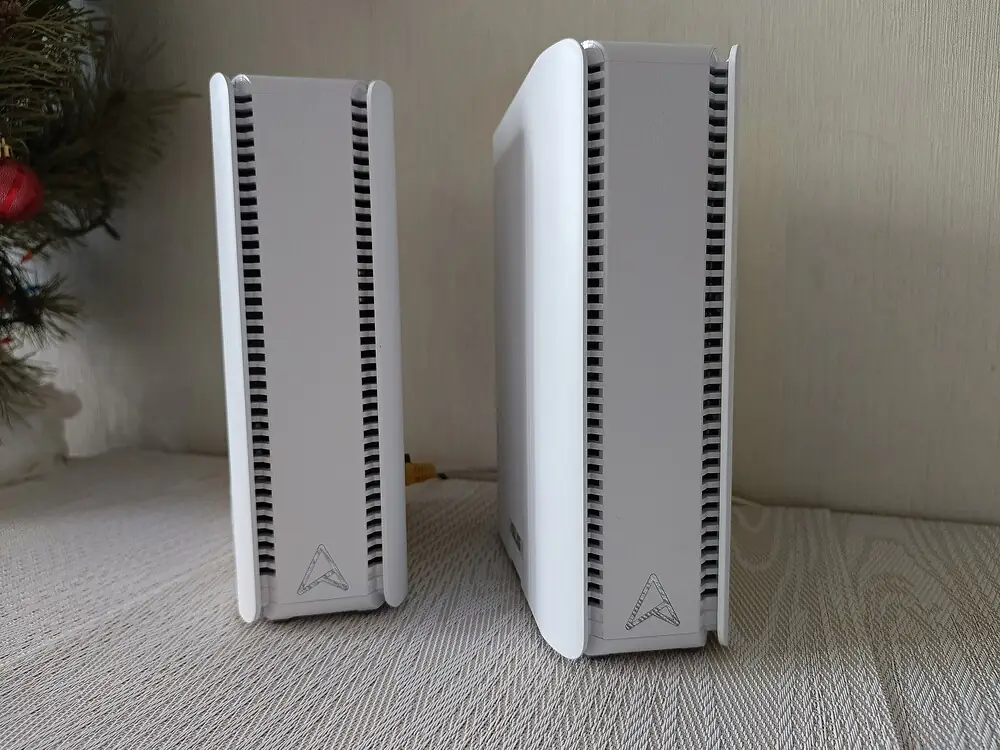
The app itself is visually neat but quite technical. I think this suits the target audience of ASUS products well, as it aligns with users who appreciate a more detailed, hands-on approach to managing their network.
On the main page, you’ll find a brief overview of your network, including the connected stations, the number of devices, and more. In the Devices tab, you can view all connected devices, along with key details like signal strength, IP addresses, and more. The ASUS Router app also displays the list of devices connected to each network unit, showing exactly which network (2.4 GHz, 5 GHz, or 6 GHz) they’re connected to. Here, you can block internet access for individual devices or set speed limits for each specific device.
By tapping on a specific node, you can access its settings. Here, you can first choose its location and optimize the node’s performance. There’s also the option to set the connection priority for the node and the access point for the upstream Wi-Fi channel. I would recommend leaving the automatic settings enabled, allowing the node to automatically determine the necessary priority.
Indeed, in the mobile app, you can toggle the lighting of the logo and front-panel indicator. Unfortunately, there is no “night mode” feature to automatically turn off and on the indicators at specific times. For less experienced users, the “Indicator Guide” section is helpful, as it explains the meaning of different indicator colors. Often, users complain that everything seems to be on, but the node doesn’t appear to be working. In such cases, understanding the indicators can help identify the issue and correct it. ASUS has chosen the white indicator color to signify that the ZenWiFi BQ16 is properly connected and functioning within the network.
In the advanced settings, you can configure AiMesh, AiProtection, and WLAN settings. This section allows you to diagnose the network, monitor it continuously, check signal levels for individual network elements, track the number of connected devices, test network speed, add VPN application profiles, prioritize specific devices, and – importantly – manage the router remotely, even when you’re not at home. Most of these features are also available in the web interface, but with a few limitations. A positive aspect is that the AiMesh system has become smarter and easier to maintain compared to when it was first introduced. Connecting compatible additional nodes to expand the network is now a simple process.
Read also: ASUS RT-AX52 Review: Budget Router with Wi-Fi 6
Web interface: for those who want more
However, after the firmware update is completed in the app, it’s worth diving deeper into all available settings and further configuring the operation of the ASUS ZenWiFi BQ16. While the ASUS Router app is useful and easy to use, if you want to access all the features this mesh Wi-Fi system has to offer, I recommend accessing the administrator interface on a PC via a web browser. There, you will find all the advanced settings and tools created by ASUS for their ZenWiFi BQ16.
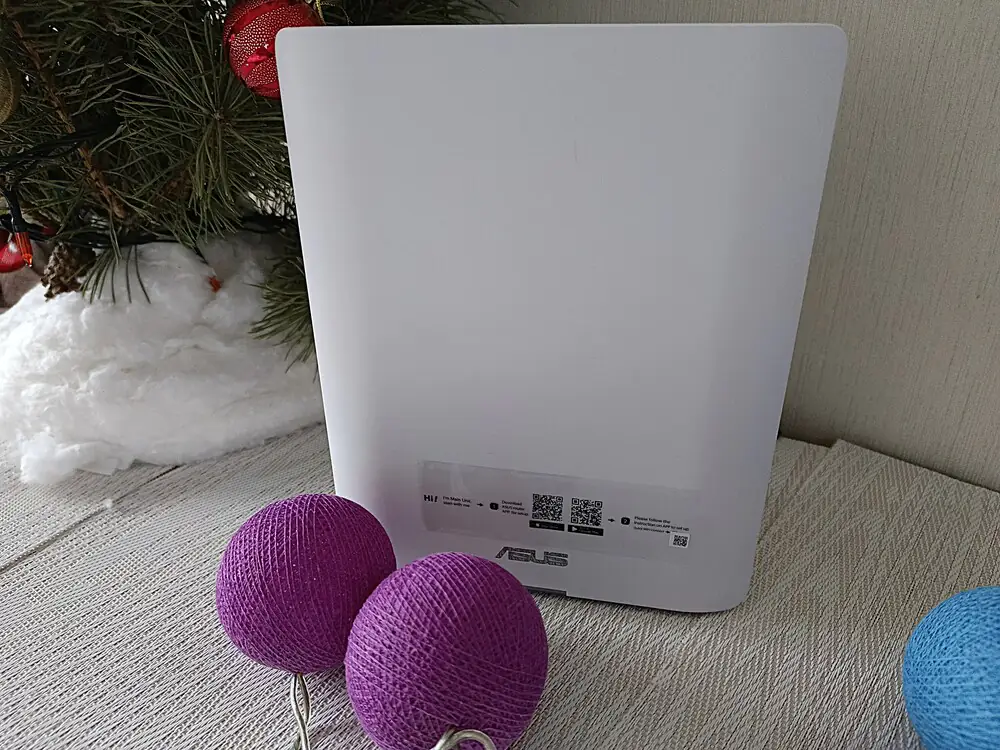
The interface is quite user-friendly, well-organized into logical sections, and available in twenty-five languages, making it accessible for users of various levels. Both beginner and advanced users will be satisfied with the level of control it offers. The help documentation is easily accessible: when you hover the cursor over a parameter that you don’t understand, a question mark appears. Clicking on this question mark displays explanatory information. Unfortunately, the documentation hasn’t been updated to cover all the features included in ASUS’s latest firmware, so this method doesn’t work for all parameters. I would like ASUS to expand this feature to include all new settings related to Wi-Fi 7, which would make working with the new configuration options associated with these standards much easier.
We won’t go over all the features, especially since most of them are basic options found in many modern routers. Instead, let’s focus on the most interesting ones, starting with the information dashboard, which is quite large. In addition to typical network traffic information, it also provides data on ping, a shortcut to the gaming radar (we’ll come back to this later), and features related to lighting.
Among the general options, we also find AiMesh, which allows you to create a mesh network composed of various ASUS routers. This is an excellent option for owners of single-family homes or very large apartments.
ASUS ZenWiFi BQ16 comes standard with the AiProtection feature. However, the only sub-feature missing in AiProtection is the Intrusion Prevention System (IPS). I decided to test the functionality of this important feature to see if AiProtection really works. I’m pleased to report that AiProtection successfully protected my device from accessing a known malicious website. Additionally, the familiar “Parental Controls” feature is present, allowing you to manage your children’s internet access time.
This feature also protects your device from spam and DDoS attacks, blocks harmful incoming packets such as Shellshocked, Heartbleed, Bitcoin mining, and ransomware, preventing network attacks on the router.
A modern router, especially at this price level, cannot do without QoS (Quality of Service). ASUS offers QoS features that include a WAN/LAN bandwidth monitor and the ability to enable either adaptive or traditional QoS. The adaptive QoS ensures optimal inbound and outbound bandwidth for wired and wireless connections, prioritizing applications and tasks based on predefined settings, such as gaming, media streaming, VoIP, web browsing, and file transfers. Naturally, there are also options for limiting bandwidth, giving users more control over network traffic and performance.
In the advanced settings, you’ll find a range of typical parameters, such as those related to the wireless network (it’s worth noting that by default, support for 160 MHz or 320 MHz channel widths is disabled, so you should enable this initially) or the guest network, which is now almost a standard feature for new routers.
While it’s possible to go on about each configuration option available in the web interface, I believe that most casual users may not be particularly interested, and experienced users can find them on their own. So, rather than wasting your time, let’s move on to the most interesting section of my review.
Read also: ASUS ROG STRIX XG259CMS Gaming Monitor Review
ASUS ZenWiFi BQ16 in use
With such powerful networking equipment at hand, I was eager to experience all its advantages and capabilities in practice. I can honestly say, I’m confident that anyone who buys the ASUS ZenWiFi BQ16 will not be disappointed. The modern design, powerful processor, the necessary set of ports and connectors, and the 12 antennas in each router all contribute to excellent performance.
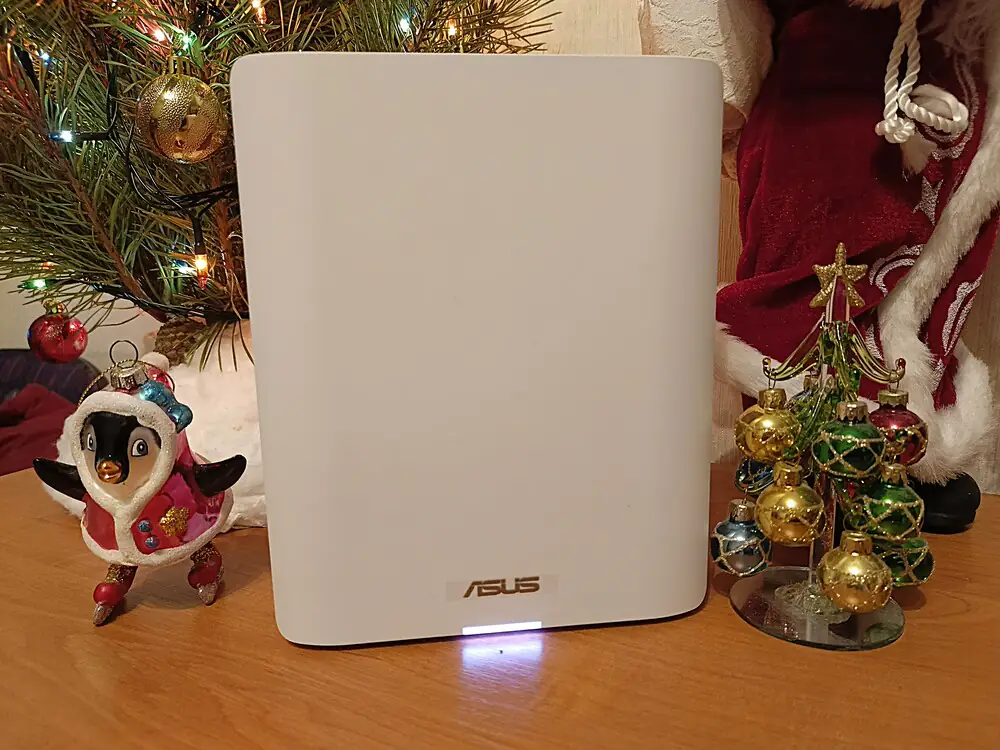
Those who live in a typical multi-apartment building with thick reinforced concrete walls, various obstacles, extensions, etc., know how often we encounter so-called “dead” zones where the router simply doesn’t reach, or its signal is unstable. In such cases, we often buy repeaters, amplifiers, or other more powerful networking equipment. However, Mesh systems are specifically designed to solve this problem. Although sometimes it seemed to me that the power of the ASUS ZenWiFi BQ16 would be enough for a two-story house or office.
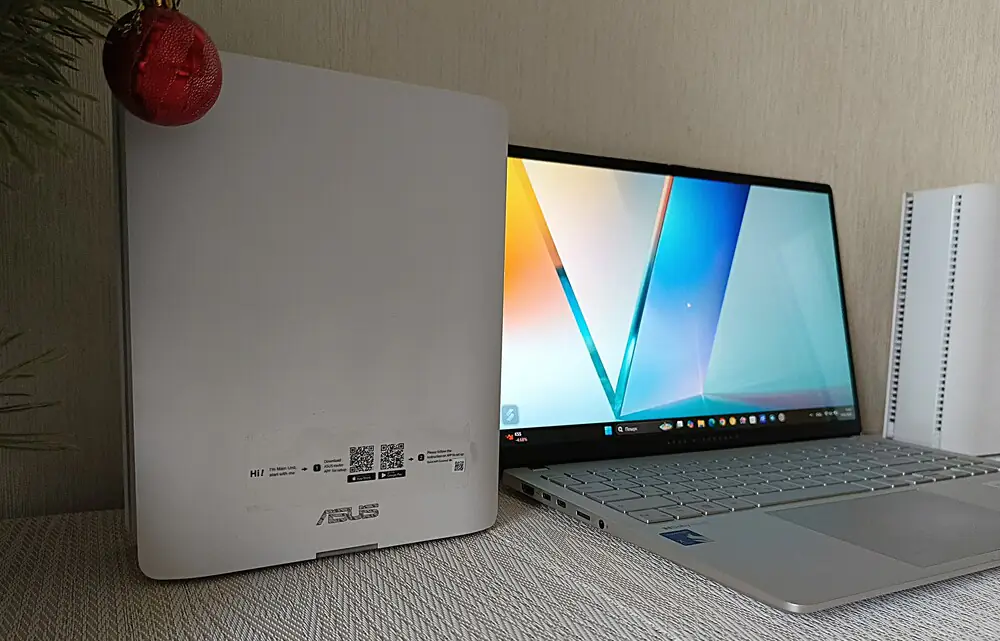
When it comes to wired connections, there are no major surprises. The ASUS ZenWiFi BQ16 delivered results close to the 1 Gbps promised by my provider. Although, admittedly, I would have liked more, considering it has a 10 Gbps WAN port. For now, such speeds are still a distant dream. But we have what we have. And what we have are quite good results with a wired connection.
Since I had a set that included two stations, I decided to take full advantage of the ZenWiFi BQ16 by placing one unit in the living room and the other in the hallway.
Usually, I choose five test points in my apartment to test the signal and its strength:
- 1 m from the ZenWiFi BQ16 (in one room)
- 3 m from ZenWiFi BQ16 (with 2 walls in the way)
- 10 m from ZenWiFi BQ16 (with 2 walls in the way)
- 15 m from ZenWiFi BQ16 (with 3 walls in the way)
- on a landing 20 meters from the ZenWiFi BQ16 (with 3 walls in the way).
Most of the devices at home already support Wi-Fi 6, although there are still some that operate on the older Wi-Fi standard. Fortunately, I have the ASUS Vivobook S15, which comes equipped with Wi-Fi 7 support, so I was able to fully enjoy the advantages of the new standard.
The testing results pleasantly surprised me, even at the fifth control point. It felt like I was constantly within the coverage of the Mesh system. The signal was always stable, and the speeds were impressive. At times, it seemed as though the devices were connected by invisible threads, smoothly transitioning my smartphone or laptop as I moved around the apartment. You really start to understand the essence of a mesh system. It’s a truly amazing feeling. It’s also worth mentioning the support for a 320 MHz channel, although, for now, it’s only in the 6 GHz range.
As for the remarks, I wasn’t entirely satisfied with the performance in the 2.4 GHz range. I feel like there’s room for improvement here. However, this is just my personal feeling, and for some, this might not be a significant issue.
Since I’m used to using the Smart Connect feature, which allows the network not to be split, I don’t see much point in showing the results for each range separately. I’ll just mention that in all five control points within my apartment, the results were very similar.
It’s worth highlighting the excellent signal stability. In every corner of the apartment, the ping remained almost unchanged, and the signal from the Mesh system stayed consistently high. There were no disconnections, glitches, or drops, not to mention any “dead zones” in the apartment. All the devices connected to it seemed to fly: smartphones, laptops, the security system, and even my KIVI TV easily streamed 4K content without any issues. Everything worked smoothly.
I didn’t have the technical capability to test the Mesh system in a two-story house with reinforced concrete floors, but I assume it would perform similarly. It’s also worth noting that in the building where I tested the routers, at least 20 other active Wi-Fi networks on 2.4/5 GHz are in use, making the conditions more challenging compared to a standalone house where such interferences are absent.
I also didn’t forget to check the effectiveness of the FTP transfer via the USB 3.2 Gen1 Type-A port. The results in this case are quite decent, though they’re closer to USB 2.0 speeds than 3.0.
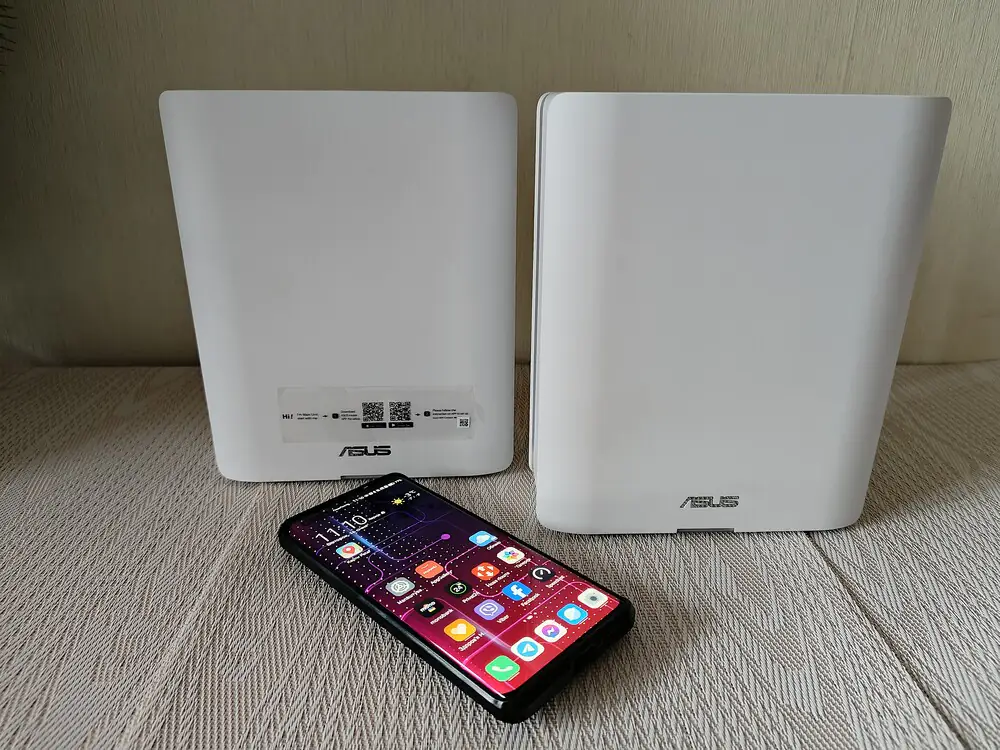
However, this does not change the fact that, according to the router’s standards, the speeds remain stable. People who aim to turn one of the ASUS ZenWiFi BQ16 modules into a kind of NAS will definitely not be disappointed.
Read also: ASUS NUC 14 Pro Review: Efficient Mini PC
Power consumption, noise and heating
In today’s world, this aspect is one of the most important. The manufacturer claims a maximum power consumption of 25W for each unit in the set, but in my tests, the results were significantly lower, amounting to exactly half of the declared figure for this Mesh system, which, of course, is quite pleasing.
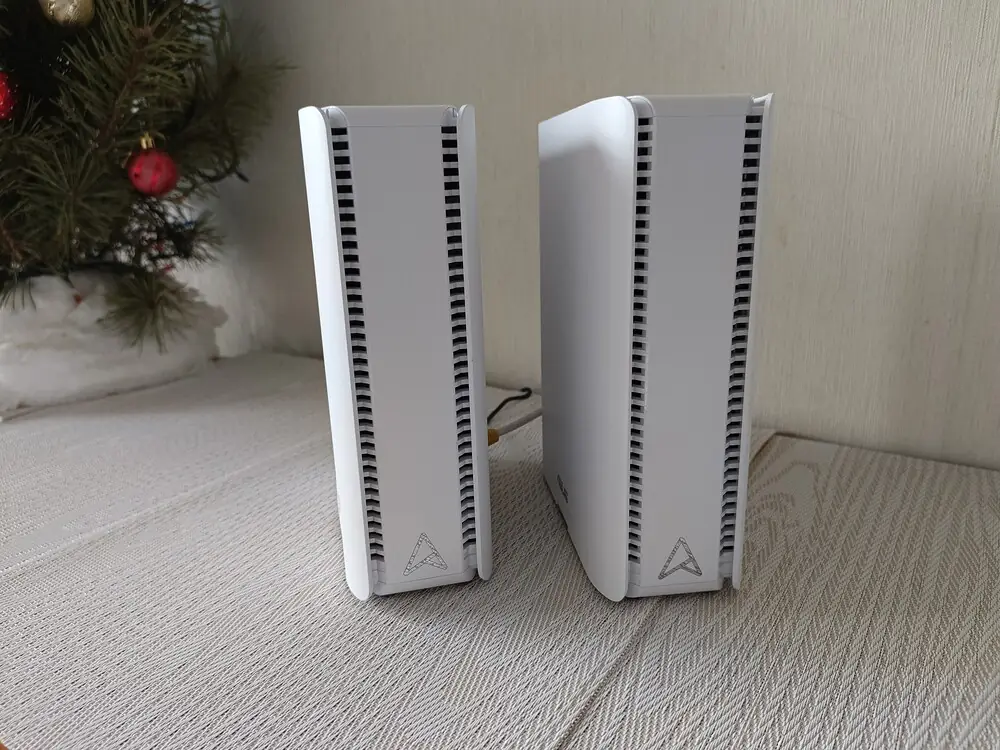
Even under maximum load, the ASUS ZenWiFi BQ16 didn’t draw more than 15W from the socket. Of course, if you multiply this value by the number of nodes, it may seem like a significant figure, but in my opinion, this is a low cost for the capabilities offered by the ASUS Mesh system.
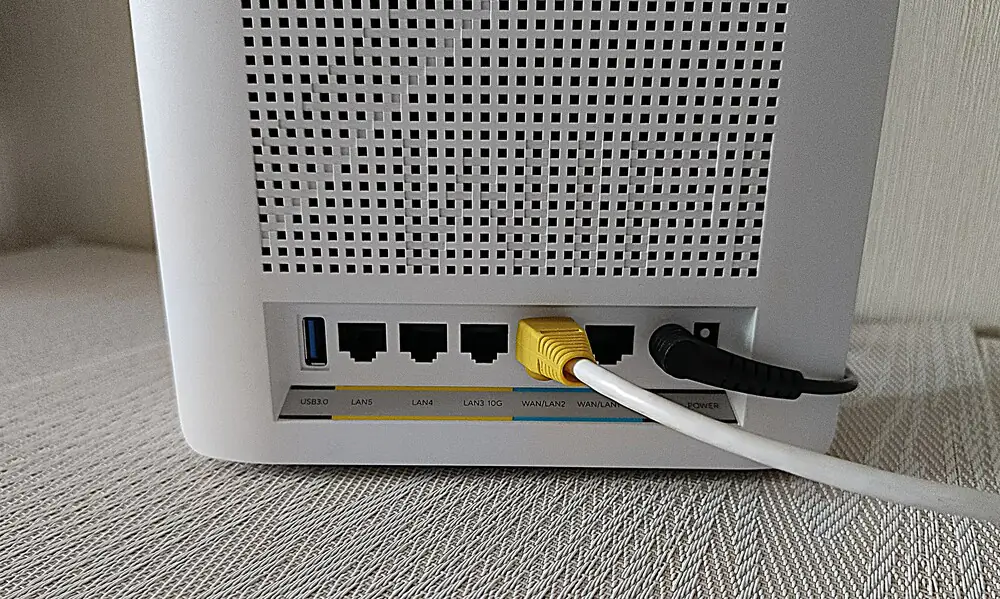
A few words about the ASUS ZenWiFi BQ16 cooling system. It uses passive cooling. This means that you will not hear any noise from the fans during the Mesh system. The entire process of heat dissipation here is carried out by natural convection. Even under load, the network device remained barely warm. Thus, in quiet mode, the temperature in the case is maintained at about 30°C, but in some places it reaches 37°C. Under load, the center of the router becomes the warmest, where the temperature sometimes exceeds 48°C.
Read also: ASUS ROG Rapture GT-BE98 Review: Router with Wi-Fi 7
Is it worth buying ASUS ZenWiFi BQ16?
The Taiwanese company has decided to expand its Mesh system offerings and has released a state-of-the-art set for those who want to use the new Wi-Fi 7 standard. This is a very promising segment where you can experiment not only with design but also with functionality.
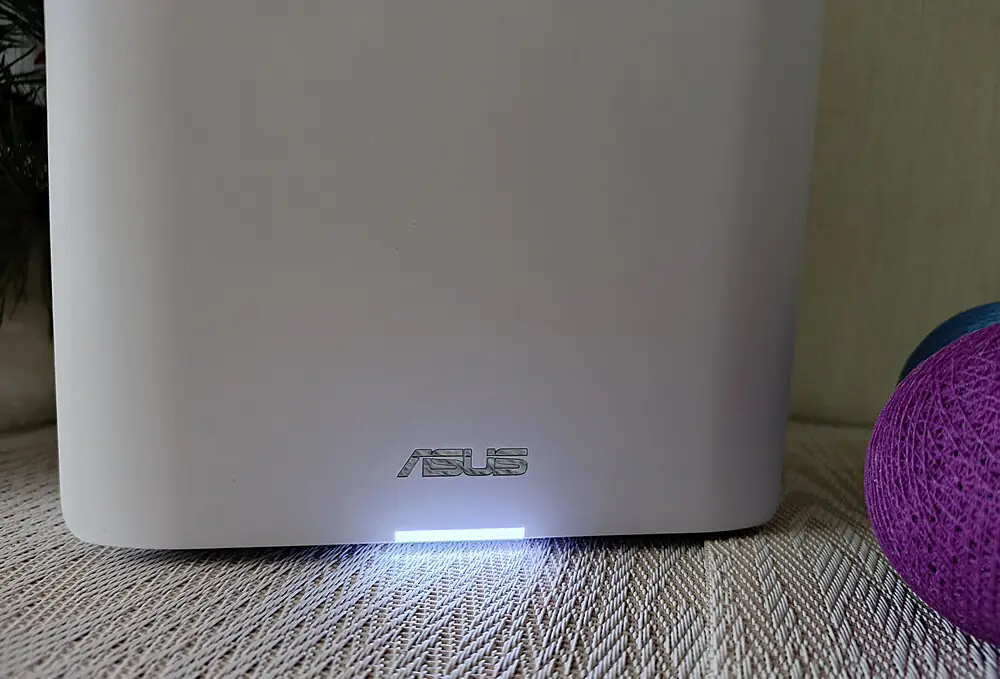
The first attempt was very successful. ASUS ZenWiFi BQ16 is a set of two powerful units that allow you to organize a large and productive wireless network. The design is also slightly redesigned. It seems to have a lot of similarities with other Mesh systems of the company, but also some successful changes. I can say one thing for sure: ASUS ZenWiFi BQ16 will fit well into the interior of your apartment, private house, or modern office.
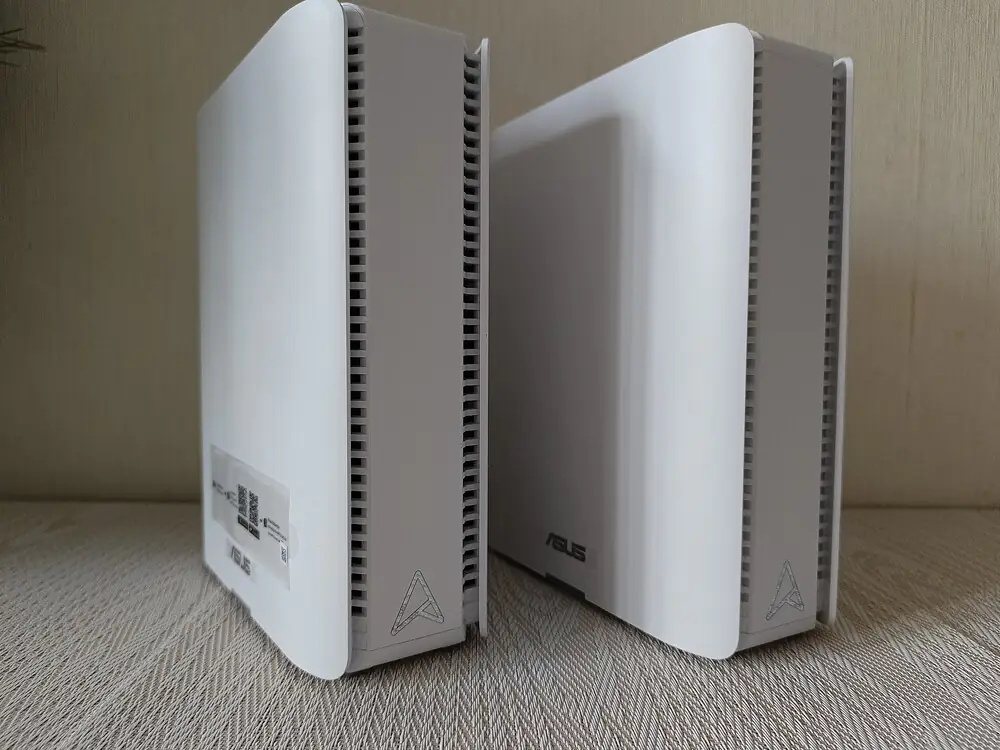
The new product from ASUS provides an excellent network with high speeds, a large coverage area and good, stable signal reception. Everything can be set up and configured very flexibly, as well as using different base station combinations. Someone will choose a cable connection, while others, on the contrary, need a wireless bridge that connects the two networks. The user has a lot of choices, a lot of options. In addition, each of the two routers can be connected to its own operator and then load-balance or organize a backup switch, and given that each of them has a dual WAN, you can use as many as four external channels.
It’s also worth mentioning the 6 GHz band, which is the most powerful band in terms of both coverage and throughput, with over 2000 Mbps when we move away from the router. It will provide a mesh connection of more than 4 Gbps, surpassing the data from previous tests.
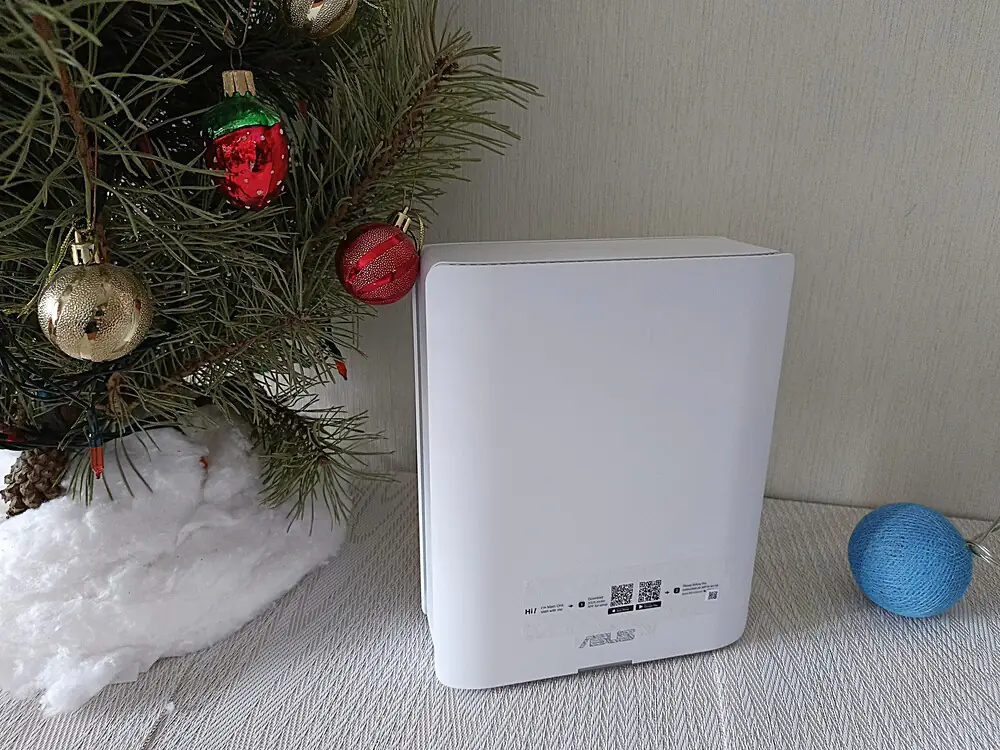
Are there any drawbacks? For me, there were practically none. While some may not like the fact that the Mesh system is quite large and will take up a lot of space, its sleek, state-of-the-art design will appeal to even the most discerning of aesthetes.
If you want to get two high-performance quad-band routers in a set that will provide a powerful, feature-rich solution designed to meet your growing demands, then the new ASUS product is definitely worth your attention. Because ASUS ZenWiFi BQ16 is the most powerful Mesh system on the market.
Read also:
Advantages
- interesting modern design
- high quality materials and build quality
- performance with support for Wi-Fi 6E and Wi-Fi 7 in the future
- excellent security tools and parental controls
- convenient ASUS Router mobile application
- smooth operation of all communication modules
- The app, especially the web interface, is multifunctional and easy to use.
Drawbacks
- performance in the 2.4 GHz band could be better
- high price



